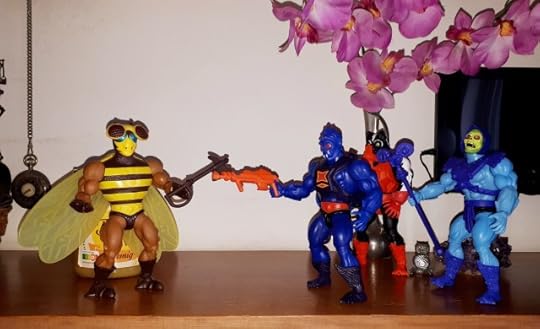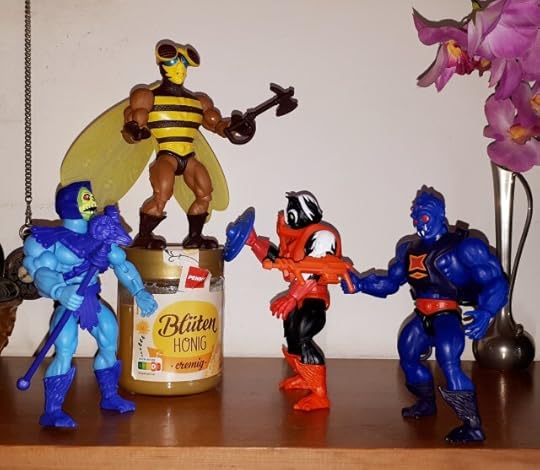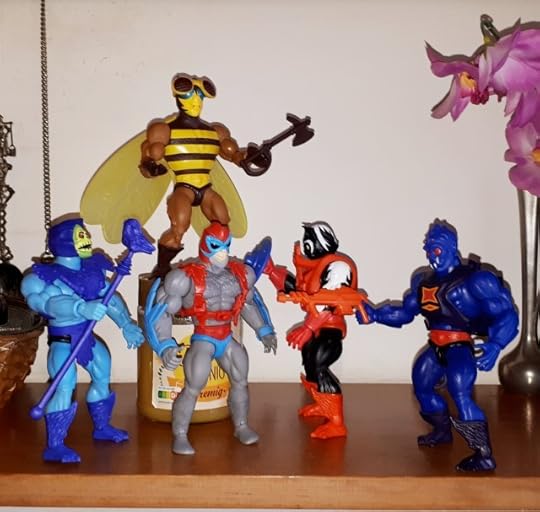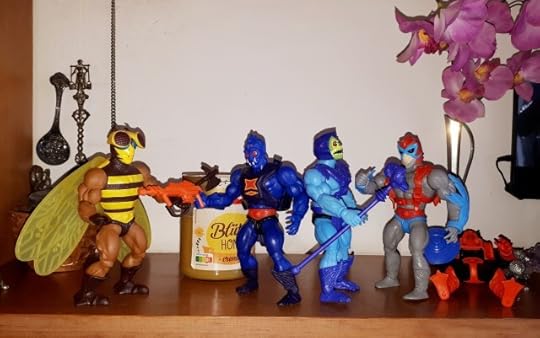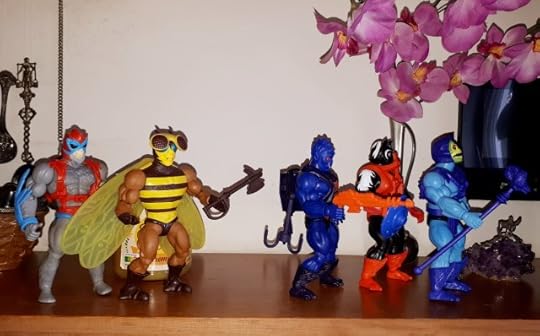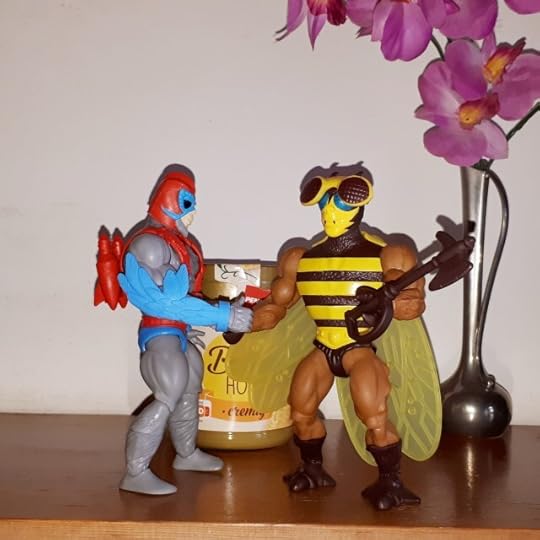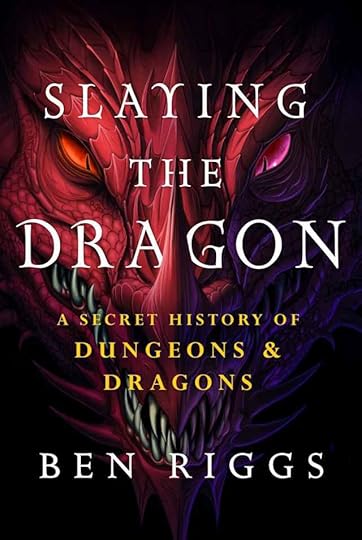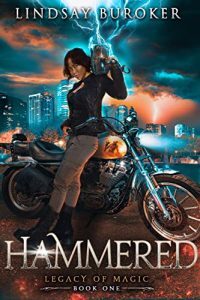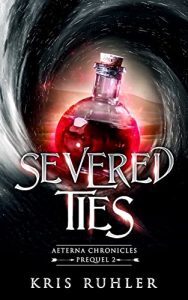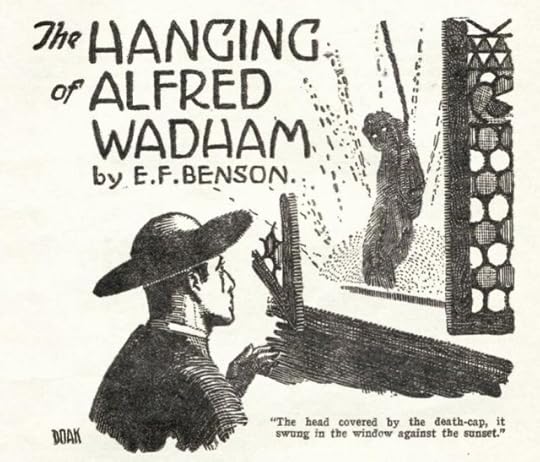Cora Buhlert's Blog, page 17
December 29, 2022
The 2022 Darth Vader Parenthood Award for Outstandingly Horrible Fictional Parents
It’s almost the end of the year, so it’s time to announce the winner of the coveted (not) 2022 Darth Vader Parenthood Award for Outstandingly Horrible Fictional Parents.
Let’s have a bit of background: I have been informally awarding the Darth Vader Parenthood Award since sometime in the 1980s with the earliest awards being retroactive. Over the years, the list of winners migrated from a handwritten page to various computer file formats, updated every year. Eventually, I decided to make the winners public on the Internet, because what’s an award without some publicity and a ceremony? The list of previous winners (in PDF format) up to 2017 may be found here, BTW, and the 2018 winner, the 2019 winner, the 2020 winner and the 2021 winner were announced right here on this blog.
Warning: Spoilers for several things behind the cut!
Before we get to the main event, let’s start with the 2022 Retro Darth Vader Parenthood Award for Outstandingly Horrible Fictional Parents. I originally created the Retro Darth Vader Parenthood Award as an anaologue to the Retro Hugos in 2020 to honour terrible parents who either did their villainous parenting before the award was a thing or who were overlooked in the past for unfathomable reasons.
Our 2022 Retro Darth Vader Parenthood Award winner is an example of the latter, a character or rather two of them who should absolutely have won back in 1985, only that I missed them when I retroactively assembled the first years of winners in the late 1980s and instead awarded the admittedly terrible soap opera character Hans Beimer. However, let’s rectify this oversight.
Therefore I’m thrilled to announce that the joint winners of the 2022 Retro Darth Vader Parenthood Award for Outstandingly Horrible Fictional Parents are…
Drumroll
Hordak the Mighty, Viceroy of Etheria and Second-in-Command of the All-Conquering Evil Horde, and Shadow WeaverAs chronicled in He-Man and She-Ra: The Secret of the Sword back in 1985 (or you can see my take on the story here), Hordak stole Princess Adora from her parents King Randor and Queen Marlena of Eternia, when she was just a baby, because he wanted the child’s fabulous secret powers for himself.
Hordak then raised young Adora as his own and made sure to instil the values of the Evil Horde, values such as subjugation, slavery and slaughter, into the girl. He was aided in this by the sorceress Shadow Weaver, who used her powers to brainwash Adora, keep her under control and prevent her from asking uncomfortable questions. Once Adora came of age, Hordak made her a Force Captain in the Evil Horde and forced her to take part in the atrocities committed by his forces. In the 2012 Masters of the Universe comic series, Hordak even sends Adora, now known as Despara, to her homeworld Eternia to attack, conquer and murder her own parents and brother.
However, coming face to face with her twin brother Prince Adam a.k.a. He-Man and getting hold of the Sword of Protection helped Adora to finally break free from Hordak and Shadow Weaver’s control and become She-Ra, the heroine she was always meant to be.
Ever since then, Hordak and Shadow Weaver have been trying to bring Adora back, by force if necessary. Not to mention that Hordak and his forces also continue to try to conquer the planet of Etheria, crush the Rebellion, enslave the population and suck out their life force to power their headquarters the Fright Zone. Furthermore, Hordak also poisoned the troubled mind of Prince Keldor of Eternia against his family, gave Keldor a vial of acid to murder his own brother and when that plan backfired (in the most literal sense of the word), Hordak used his dark magic to turn Prince Keldor into Skeletor, the Lord of Destruction. Finally, Hordak is also notoriously abusive towards his own subordinates such as Mantenna, Grizzlor, Leech or Catra and frequently drops them through a trap door in front of his throne.
Such villainy deserves an award and therefore Hordak and Shadow Weaver are the winners of the 2022 Retro Darth Vader Parenthood Award for Outstandingly Horrible Fictional Parents.
ApplauseApplause errupts around the auditorium. Only Hans Beimer, the actual 1985 winner, boos.
Hordak and Shadow Weaver both appear in person, Hordak clad in his familiar black uniform with red cape and bat symbol and Shadow Weaver clad in her flowing dark pink robes. They take to the stage, flanked by two Horde Troopers and accompanied by Mantenna, Grizzlor and Mosquitor. In the front row, Hans Beimer continues to boo, until he gets zapped by a Horde Trooper for his trouble.
Hordak and Shadow Weaver accept their award, an ugly vase, and deliver the following acceptance speech:
Thank you. I am so… sniff… touched that my efforts in bringing peace and order to the galaxy in the name of the Great and All-Mighty Horde Empire are finally being recognised and I greatfully accept this… what is this object of power anyway?
It’s just an ugly vase. It’s not as if we can actually afford a trophy.
“…this ugly vase of power. But this is apparently about Adora, so Adora, if you can hear me and I know you can, please, come back. I promise you that you will not be punished, at least not very much. Just please, come back and rejoin the Horde.
I know that we have not always seen eye to eye in the past and that we have had disagreements on matters of Horde policy such slavery, decimating local populations or sucking out the life force of prisoners. But I know that it is perfectly normal for children to disagree with their parents’ politics, especially since children don’t always understand the harsh realities of governing a galaxy-spanning empire.
And yes, I know you’re angry that Shadow Weaver and I never told you about your biological parents. But why can’t you see what we have given you? When I first took you from Etheria, you were just a squishy, soft, ugly, little pink thing that cried and peed all the time. But we raised you, taught you, trained you and made you a Force Captain of the Horde and my Despara, my harbinger of doom and destruction. Surely that has to count for something. I mean, have you ever looked at that brother of yours? He’s a lazy bum and a coward. Is that really the life you want for yourself?
If you’re worried that we’re upset about your relationship with Catra, we’re not. Why should we be upset? Catra was always a most loyal Horde enforcer and she’s certainly better than that treacherous bum Sea Hawk. Though we would appreciate it, if you were to bring Catra back as well, Adora, if only because I’m running out of Force Captains and have even been considering promoting Mantenna, which should show you how desperate I am. But honestly, while we know that humans have strange hang-ups about same sex relationships, we of the Horde do not know such prejudice.
The Evil Horde is fully committed to workplace diversity. I mean, Mantenna, Grizzlor, Mosquitor, Leech and Modulok are not even the same species and Horde Prime alone knows what their sexual preferences are. We are an LGBTQ friendly employer. At least, this book So Your Kid Just Came Out As Gay that Eleanor gave me said I should say that.
In the front row, 2021 winner Eleanor Bishop blows Hordak a kiss and calls out, “See, Hordak, dear, I told you that would work. Don’t forget to call me about business opportunities for marketing the products your slaves produce.”
Hans Beimer briefly comes to and manages to emit one more “boo”, before a Horde Trooper zaps him once more.
Just please come back, Adora. I miss you, my Force Captain, my Despara, my harbinger of doom and destruction. Torturing prisoners has never been as much fun as when you were sitting beside me.
Shadow Weaver then takes the mike and adds:
Catra and Adora, quit this nonsense and come back to the Horde. Just come back and I will make sure that you will soon forget all of those silly rebellious ideas and thoughts and sleep the slumber of the wicked again.

The Evil Horde poses for a group photo with the ugly vase.
Hordak, Shadow Weaver and their entourage leave the stage. “Boss, are you really going to promote me to Force Captain?” Mantenna asks and promptly gets slapped across the auditorium.
Hordak, champion of LGBTQ rights. And I thought I’d heard everything.
***
Anyway, now that the Retro Award is out of the way, let’s get to the main event, namely the 2022 Darth Vader Parenthood Award for Outstandingly Horrible Fictional Parents.
As I’ve noted in 2020 and 2021, every year there seem to be fewer and fewer Darth Vader Parenthood Award candidates and more and more candidates for the Jonathan and Martha Kent Fictional Parent of the Year Award, which will be handed out tomorrow.
Another trend I’ve noticed in 2022 is that we increasingly see fictional parents who are neither cartoonishly evil nor saintly good, but who are just people who clearly care for their kids and yet mess up anyway and drive them away. I’m not the only one who has noticed this trend, by the way. Matthew Huff wrote a whole article about the phenomenon for the AV-Club.
Evelyn Wang from Everything Everywhere All at Once is probably the best example of this tend, a woman who clearly loves her daughter and yet disapproves of her lifestyle and the fact that her daughter is gay. Evelyn could theoretically win both the Darth Vader Parenthood Award and the Jonathan and Martha Kent Fictional Parent of the Year Award and somewhere in the multiverse she probably did.
Viserys Targaryen from House of the Dragon is another example. He clearly loves his oldest daughter and heir Rhaenyra and yet order his pregnant wife Aemma to be sacrificed in order to save the life of her baby, whom he hopes will finally be a male heir to the Iron Throne. After the death of his first wife, Viserys remarries Alicent Hightower and three sons and a daughter with her and still insists that Rhaenyra shall inherit the Iron Throne, setting Rhaenyra against Alicent. Furthermore, Viserys forces Rhaenyra to marry Laenor Velaryon, whom she does not love and who is likely gay. Viserys messy family relationships and treatment of Rhaenyra, Alicent and their respective kids leads to a civil war after his death.
Season 2 of Star Trek Picard decided to delve into Jean-Luc Picard’s unhappy childhood, complete with flashback scenes of Picard’s loving mother Yvette, who permanently seems to be terrified of something, and her abusive husband Maurice. However, it eventually turns out that Jean-Luc’s memories are not exactly reliable and that Yvette was mentally ill and eventually committed suicide and that Maurice, even though he’ll never be father of the year, was actually trying to protect his young son. So I’ll file Maurice and Yvette Picard under ambiguous.
Now let’s move on to parents who are unambiguously terrible, but not quite terrible enough to win the award. First, we have Wendy Spector, mother of Randall and Marc Spector. As chronicled in Moon Knight, when Randall Spector accidentally drowned as a child, Wendy blamed her other son Marc and physically and emotionally abused him, until Marc developed dissociative identity disorder to cope with the abuse. That’s pretty terrible, but not quite terrible enough to win.
The Star Wars series Andor yielded several parents of the good, the bad and the ugly kind. We’ll tackle the good tomorrow, but first let’s look at the bad and the ugly. Eedy Karn is the ambitious and cold mother of Deputy Inspector Syril Karn who is inordinately concerned with her son’s career in the Empire and willing to pull any nepotism strings, so Syril will ascend the Imperial ladder of success. She’s pretty awful, but just plain awful isn’t enough to succeed in an award named after none other than Darth Vader himself, so it’s No Award for Ms. Karn.
Andor also gives us a look into the family life of rebel leader Mon Mothma on Coruscant and it’s not happy. Now no one can doubt that Mon Mothma was a great leader of the Rebellion and she also was a very active and engaged Senator for her homeworld Chandrila. However, like many very politically active and socially engaged people, Mon Mothma is a pretty shitty mother who neglects her teenaged daughter Leida for her political ambitions, discourages Leida’s interest in the culture of her mother’s homeworld and even sells Leida out in an arranged marriage to cover up the embezzlement of funds for the Rebellion. Leida’s father Perrin Fertha is pretty shitty, too, and basically only cares about the good life on Coruscant and not at all for his wife’s political career. He also hangs out with high-ranking Imperials and supports neither his wife nor his daughter. Now anybody who has met people who are very politically and socially active and busybody do-gooders knows that a lot of them are terrible parents and partners, though it is interesting to see a Star Wars series, even one as compatively realistic as Andor, not just acknowledge this, but protray a popular character like Mon Mothma as a bad mother. But though Mon Mothma may not be a good mother, Darth Vader she’s not.
In the end, the battle for the 2022 Darth Vader Parenthood Award came down to a neck to neck race between two sets of parents. Which brings us to the runner-up for the 2022 Darth Vader Parenthood Award for Outstandingly Horrible Fictional Parents, namely…
Drumroll
Ulysses and Verussa BloodstoneAs portrayed by actors Richard Dixon and Harriet Samson Harris in Werewolf by Night, Ulysses was the head of a monster hunter clan and wielder of the legendary Bloodstone, which weakens monsters and also exposes hidden monsters. Ulysses was a very enthusiastic monster hunter and did not particularly care if the “monsters” actually posed a threat to anybody. If someone met Ulysses’ definition of monster, he would hunt and kill them without mercy.
Ulysses’ first wife and his daughter Elsa did not agree with his profession and became estranged from him. Ulysses eventually remarried and his second wife Verussa enthusiastically partook in the monster-hunting family business.
When Ulysses finally shuffled off this mortal coil, Verussa called together various monster hunters to determine who should inherit the Bloodstone. Elsa reappeared as well to claim her inheritance, much to Verussa’s chagrin. The inheritor of the Bloodstone was to be determined via a monster hunt staged on the ground of the Bloodstone estate and the monster to be hunted was an innocent creature named Ted a.k.a. Man-Thing. When Elsa teamed up with Ted and his friend Jack to free Ted and gain the stone for herself, Verussa threw a fit, locked Elsa in a cage with a werewolf about to transform and repeatedly tried to kill her. She eventually succumbed to an attack by Ted, who may be mild-mannered, but nonetheless has limits.
That sort of villainy deserves recognition and therefore I name Ulysses and Verussa Bloodstone the runners up for the 2022 Darth Vader Parenthood Award for Outstandingly Horrible Fictional Parents.
ApplauseSince Ulysses and Verussa Bloodstone are both dead, their daughter/stepdaughter took to the stage, clad in jeans and a blood-red leather jacket.
I’m not sure what I’m even doing here? I mean what’s the point of this? To prove that my father and my stepmother were fucking terrible people? I fucking know that they were fucking terrible people, thank you very much. As for this…
Elsa looks at the ugly vase.
…I don’t want it. I mean, I inherited a whole mansion full of butt-ugly furniture and I’m still in the process of cleaning that shit out. Why would I want an ugly vase?
She throws the ugly vase across the auditorium, narrowly missing Hans Beimer and hitting Mantenna instead, who yelps, as his eyes pop out.
But while I’m here, let me make one thing very clear: The Bloodstone organisation is under new management. And henceforth, we will only hunt cryptids, if they actually pose a threat to humanity. No more monster hunting just for the fun of it. Cause Nosferatu there…
She points at Hordak, who is completely confused by the reference, since 1920s horror movie have not yet found their way to the Horde Empire.
…has it right. It doesn’t matter what someone looks like, whether they’re human, mutant, werewolf, vampire or monster. What matters is what they do. If you live your life peacefully, the Bloodstone organisation is not going to harass you. But if you hurt others, you’ll answer to me.
She storms off, while the entire auditorium looks after her. “Ungrateful whelp,” Shadow Weaver hisses.
Okay, after that fiery speech, let’s finally get to our Grand Prize. The winner of the 2022 Darth Vader Parenthood Award for Outstandingly Horrible Fictional Parents is none other than…
Drumroll
Dr. Adam SoongPortrayed by actor Brent Spiner in season 2 of Star Trek Picard, Dr. Adam Soong is a geneticist with delusions of grandeur living in the Los Angeles of a 21st century one universe over.
Possessed by seemingly unlimited wealth, Dr. Soong poured considerable funds and effort into highly unethical research and created at least 24 clone daughters, only one of whom, Kore, survived to adulthood, while her sisters succumbed to rare genetic disorder that made both sunlight and dust deadly for them. Soong lied about his experiments to everybody, including Kore, who believed that she was Soong’s biological daughter.
When Soong was called before an ethic committee and lost his funding, he accepted an offer from a mysterious alien being calling himself Q. In exchange for a substance that would cure Kore’s condition, Q demanded that Soong stop a young astronaut named Renee Picard from boarding the first mission to the Jupiter moon Europa. Soong was extremely ruthless in achieving this goal and repeatedly tried to murder Renee, actually did murder the Watcher Tallinn and ran over Admiral Jean-Luc Picard with a car. Furthermore, he also handed a squad of special forces soldiers over to the Borg Queen to be assimilated and personally led them on an assault on the French vineyard Chateau Picard. He also tried to kill Jean-Luc Picard again as well as Seven of Nine, Raffi Musiker and Chris Rios. Oh yes, if all that wasn’t awful enough, Dr. Adam Soong was also involved in a top secret genetics project codenamed “Khan” and we all know where that leads.
At least Q delivered the cure to her condition to Kore Soong, who promptly deleted all of her father’s files and took off. She was last seen in a park in Los Angeles in the company of a Watcher named Wesley Crusher. We hope she has an amazing life up there among the stars.
That sort of villainy deserves an award and therefore I name Dr. Adam Soong the winner of the 2022 Darth Vader Parenthood Award for Outstandingly Terrible Fictional Parents.
ApplauseDr. Soong ascends the stage clad in the elegant tuxedo, gratefully accepts the ugly vase and delivers the following speech:
Thank you. Thank you so very much. I am… sniff… so honoured that my genius has finally been recognised.
For decades I laboured in obscurity, hemmed in by red tape and stupid ethical rules. Tell me, why should I not create and clone my own daughters? If I had gone to a fertility clinic, the whole thing would have been entirely legal, but just because I created my clone daughters myself, I’m suddenly a criminal? If anybody is a criminal here, it’s my latest daughter Kore who deleted my research, my life’s work, and emptied out my bank accounts, too. And I demand that Kore is found and made to pay for her actions. Do you hear me, you lazybum police officers? Find her!
But I digress. Esteemed jury, if you feel that Kore and her late lamented sisters were an exceptional feat of genetic engineering, trust me, you will love my next project. Cause project Khan will create humans that are faster, smarter and better than plain old homo sapiens. I promise you, the next step of evolution is here and I, Dr. Adam Soong, have helped to usher it in. My name shall live forever in fame.
Thank you. Thank you very much.
He descends the podium, blowing kisses to the audience and clutching his ugly vase. He sits down next to 2021 winner Eleanor Bishop and they immediately begin chatting. I guess we’d better keep an eye on those two, since I’m sure they’re plotting something.
Meanwhile, Hans Beimer tries to grab the Retro ugly vase from Hordak and gets zapped for his troubles… again.
***
And that’s it for the 2022 Darth Vader Parenthood Award. The companion prize, the Jonathan and Martha Kent Award for the Fictional Parent of the Year will be handed out tomorrow.
Who will win next year? You’ll find out in this space.
***
Disclaimer: I don’t own any of these characters, I just gave them an award and wrote an acceptance speech for them. All characters and properties are copyright and trademark their respective owners.
December 19, 2022
Links and New Releases
I’ve got a couple of links and new releases to share. For starters, Smashwords are running their annual end-of-the-year sale. Lots of e-books at drastically reduced prices, including several of mine.
Furthermore, I’ve got a new story out in issue 6 of Whetstone Magazine. It’s called “The Vault of the Nine Sigils” and features a lost city, a greedy rogue, a mysterious sealed vault and monkeys. You can download of issue 6 of Whetstone Magazine here and read mine and twelve other great modern sword and sorcery tales by Howard Andrew Jones, Chase A. Folmar, Turlough Lavery, Matthew X. Gomez, Rev. Joe Kelly, Oliver Brackenbury, Robert O’Leary, Michael Burke, Jimmy Stamp, Owen G. Tabard, Jon Carroll Thomas, B. Harlan Crawford and J. Thomas Howard. Also check out the great cover by Meagan LeMay.
I’m also over at Galactic Journey again, where I review Outlaw of Gor by John Norman as part of the December 1967 Galactoscope and also discuss the 1967 sex education film turned box office hit Helga..
I reviewed the first two Gor books, Tarnsman of Gor and Outlaw of Gor for Galactic Journey and it has certainly been an interesting, if frustrating experience. For while the Gor books are infamous for their BDSM content, the first two books start of with lengthy and extremely dull infodumps, which you have to get through to get to the spicy stuff. Furthermore, the sexual content of Tarnsman was fairly mild, though Outlaw dials up both the BDSM stuff and the misogyny, which is interesting, since the consensus seems to be that the Gor series didn’t go off the rails into full-blown BDSM erotica with a heavy dose of misogyny until the sixth book. However, the misogyny already creeps in in the second book IMO. Also, considering how badly written and infodumpy the first two Gor books are, I honestly wonder why the series ever became as popular as it was. Whether you want Edgar Rice Burroughs style planetary adventures or sex, there were better places to find both even back in 1967.
In general, it seems as if 1967 is the year that the sex content in SFF books goes up and some of it becomes weird and outright icky. Because SFF books published in 1966 that were considered shocking at the time like Babel-17 by Samuel R. Delany or The Moon is a Harsh Mistress by Robert A. Heinlein with their poly relationships are not really shocking to a modern reader. Even the first Gor book is fairly tame by modern standards. In 1967, however, you suddenly get things like the utterly terrible Chthon by Piers Anthony a.k.a. “incest is the only real love” or Outlaw of Gor a.k.a. “all lesbians need is to be enslaved by a real man”.
In other news, I also have an essay in issue 67 of Journey Planet: “Anthropocene Ruminations”, guest-edited by Olav Rokne and Amanda Wakaruk of the most excellent Unofficial Hugo Book Club Blog. My essay is about renewable energy in the home and that for some reason science fiction barely acknowledges what is already possible right now with technology that we have, let alone what will be possible in twenty or fifty years. Other contributors to this issue include Victoria Paterson, Camestros Felapton, A.L. Yakimchuk, Juan Sanmiguel, Jason Sanford, Paul Weimer, Victoria Carter, Collin Horn, James Bacon, Nicholas Pallaris, Oghenechovwe Donald Ekpeki, Christopher J. Garcia, Stephen Griffith, Marshall Boyd and Gautam Bhatia. You can read and download the issue here.
Finally, I also have a piece out in issue 442 of The Drink Tank about “Crime Fiction 1950 – 2000”, edited by Christopher J. Garcia and Chuck Serface. My article is about the German pulp detective G-Man Jerry Cotton and appears alongside Christopher J. Garcia writing about the works of Robert McGinnis, the Cadfael Chronicles by Ellis Peters, Gregory McDonald’s Fletch and Roger Rabbit, Chuck Serfaces weighing in on the Travis McGee novels by John D. MacDonald, Helena McCallum praising the works of Seishi Yokomizo and Joe Price talking about crime fiction as morality plays. You can read and download the issue here.
That should be plenty of reading material for tonight.
December 16, 2022
Masters-of-the-Universe-Piece Theatre: “Honeypot”
It’s time for another Masters-of-the-Universe-Piece Theatre photo story. The name “Masters-of-the-Universe-Piece Theatre” was coined by Kevin Beckett at the Whetstone Discord server. You can check out all the Masters-of-the-Universe-Piece Theatre Photo Stories here.
I posted this story on Twitter some time ago, but I never posted it on the blog, so let’s rectify that.
This story is called “Honeypot” and the star is not He-Man for once, but another member of the Masters of the Universe (which was originally just the name of the toyline, until the 2002 cartoon made it the name of the heroic warrior team, something most subsequent versions kept), namely Buzz-Off.

Buzz-Off posing with his axe and a Schleich giant ape.
Now Buzz-Off is one of the stranger Masters of the Universe characters, since he’s essentially a giant axe-wielding humanoid bee. As a kid, I always found him silly, because looks very much like Maja the Bee’s Dad. And in fact, I should probably get a Maja the Bee figure to serve as his kid, provided the scale is right.
The 2002 cartoon updated the character design to look less goofy and also gave him more of a backstory, making Buzz-Off second-in-command of the Andreenids, a species of bee people live in the Mystic Mountains and have an longstanding enmity with the Avionians, i.e. the bird people whose leader is Stratos. The Andreenids also produce honey which has healing properties and gives you superstrength, at least if you’re an Andreenid. It doesn’t work with other species, as this episode of the 2002 cartoon shows.
As with any object or substance that supposedly grants you superpowers, Skeletor is of course after the Andreenids’ honey and will stop at nothing to get his hands on it.
Andreenos, deep in the Mystic Mountains:

The honey of Andreenos is portrayed by a jar of honey from the kitchen.
“Come on, my Evil Warriors. All we need to do is steal the magical life-giving honey of Andreenos and then we shall be invincible. Bwahaha.”
“It’s not even guarded either. Like taking candy from a baby. Or honey from a bee.”
BZZZZZZZ…
“Halt, villains! If you want to steal the sacred honey of Andreenos, you will first have to go through me.”
“Oh buzz off, fly boy!”
“That’s Lord Buzz-Off to you, Skeletor.”
“Get him, my Evil Warriors. Squash the bug! Swat the fly!”
“For the last time, I’m not a fly. Or a bug.”
“Feel my spider sting, Buzz-Off.”
“Crap, I could use some help here. He-Man would be great. Or Man-at-Arms. Or Teela. Or anybody really. Even…”
FLUTTER.
“…Stratos!”
“Hello, friend Buzz-Off. Need a hand or a wing?”
“Anytime, Stratos. Just pick one and start smiting. There’s more than enough to go around.”
“So you want to steal our sacred honey, Skeletor. Well, I’ve got news for you. It only works on Andreenids.”
“Oh, I’m pretty sure it works on Arachnids, too. Right, Webstor?”
“Right, boss. Just one taste and I shall be invincible.”
“When Buzz-Off said, ‘Pick one’, why did I have to pick Stinkor. Ugh, that smell.”
“Guess what’s for dinner tonight, boys? Right, smoked turkey.”
SLAM!
“So you think you’re tough enough to taste our magical honey?”
“Think? I’ll show you that I’m tough enough. All people of the Mystic Mountains shall bow before the might of Webstor.”
“Well, think again, itsy bitsy spider.”
STING!
“Just you and me, Skeletor. Like in the olden days.”
“Oh please, Stratos. We never fought. I always left you to Beast-Man to play with, while I dealt with Randor and Duncan.”
“Well, Best-Man’s not here, so feel the fury of Avion.”
PUNCH!
“Retreat, my Evil Warriors. Honey is bad for your waistline anyway.”
“Yeah, run away, Skeletor! We’ll send the Royal Guard after you to mop you up.”
“Or the warriors of Andreenos and Avion.”
“Thanks for the help, Stratos.”
“Anytime, Buzz-Off. Besides, my knuckles were itching for a workout.”
“Uhm, you do know that our people are supposed to be mortal enemies.”
“Yeah, but that doesn’t mean we have to be.”
***
And that’s it for today, folks. I hope you enjoyed this Masters-of-the-Universe-Piece Theatre Photo Story, because there will be more.
Disclaimer: I don’t own any of these characters, I just bought some toys, took photos of them and wrote little scenes to go with those photos. All characters are copyright and trademark their respective owners.
December 8, 2022
Non-Fiction Spotlight: Slaying the Dragon – A Secret History of Dungeons and Dragons by Ben Riggs
After the Hugos is before the next Hugos, so I’m continuing my Non-Fiction Spotlight project, where I interview the authors/editors of SFF-related non-fiction books that come out in 2022 and are eligible for the 2023 Hugo Awards. For more about the Non-Fiction Spotlight project, go here. To check out the spotlights I already posted, go here.
For more recommendations for SFF-related non-fiction, also check out this Facebook group set up by the always excellent Farah Mendlesohn, who is a champion (and author) of SFF-related non-fiction.
RPGs are not just SFF-adjacent, especially the granddaddy of them all, Dungeons & Dragons, has deep roots in the genre via the famous Appendix N.
Therefore, I am pleased to welcome Ben Riggs, author of Slaying the Dragon – A Secret History of Dungeons and Dragons, to my blog today:
My book is the shocking and true story of the rise of Dungeons & Dragons and how it almost imploded in the 90s under the weight of terrible management decisions. If you’re interested in an representative sample, Dicebreaker excerpted the disastrous attempt of TSR to create a comic book company in the 90s. https://www.dicebreaker.com/series/dungeons-and-dragons/feature/dnd-comic-books-failed-attempt-tsr-dc-comics
Tell us a little bit about yourself.
I am a teacher/writer/podcaster/historian/mage.
I speak five languages, and I’ve taught in four countries on three continents.
I have tutored royalty, and visited students in jail.
Once, I lived next to a yakuza, and put a hole in his wall. It is not something I would recommend.
Another time, I went to a Christmas party thrown by expat Communists in Beijing. We sang “The Internationale,” and then “Silent Night.”
Once, law enforcement got me out of my bathtub.
Another time I took some 8th graders from Milwaukee to New York City. We were walking through the Gold Distict at closing time, and apparently the gold trade in New York has a lot of Hasidic Jewish proprietors. As they closed up their shops and headed home, one 8th grader said to me, “Wow. The Amish are really making a go of it here in New York!”
I still teach fulltime in Milwaukee, Wisconsin. I have one wife, one son, and not enough time to write.
I will further add that everything above is Gospel truth. I am not one of those writers who makes things up for their bio.
What prompted you to write/edit this book?
The book chose me.
The book started out as an article for Geek & Sundry, and as I researched the article, I discovered more and more about TSR and D&D that I had no idea was the case. The failed attempt to start a comic company. The failure to pay its printer. The loans from their distributor. The shocking way bestselling authors were treated. These tales demanded I record them. I chased the story and 100,000 words later, there was a book!
Why should SFF fans in general and Hugo voters, in particular, read this book?
I have been told that even if one is not a D&D fan, the book is a great look into a geek company and the choices that can lead to its failure. Furthermore, the D&D community and SFF community are adjacent, and what happens in one often informs the other.
Do you have any cool facts or tidbits that you unearthed during your research, but that did not make it into the final book?
No, actually. I mercilessly crammed every scandal and frak-up into the text. I wanted to earn the subtitle, “The Secret History of Dungeons & Dragons.”
SFF-related non-fiction is somewhat sidelined by the big genre awards, since the Nebulas have no non-fiction category and the Best Related Work Hugo category has become something of a grab bag of anything that doesn’t fit elsewhere. So why do you think SFF-related non-fiction is important?
Geek non-fiction, or geek history as I would peg my genre, is the story of our wheezy and wonderful tribe. Lord of the Rings is a staggering and monumental work. But in The Inklings, which covers Tolkien’s writing of his opus, we hear that when he rose to read a portion of the book, which was then in its tenth year of composition, one audience member yelled, “Oh God! Not another fucking elf!”
LotR is improved by the work of Tolkien critics and historians. I hope my work does the same for D&D.
Are there any other great SFF-related non-fiction works or indeed anything else (books, stories, essays, writers, magazines, films, TV shows, etc…) you’d like to recommend?
As mentioned above, I’d shout out to The Inklings by Philip and Carol Zaleski, Game Wizards and Art and Arcana: A Visual History of D&D by Jon Peterson et al. Also, History of the Hobbit by John Rateliff.
Where can people buy your book?
In North America, anywhere fine books are sold!
In the UK/Ireland/Australia, on Amazon ebooks.
In Poland, it will be in print in the next 18 months.
Where can people find you?
I’d point you to my blog (https://www.writerbenriggs.com/blog) and my Twitter @BenRiggs_
Thank you, Ben, for stopping and answering my questions. Do check out Slaying the Dragon – A Secret History of Dungeons and Dragons, if you’re at all interested in the history and development of the RPG and the company behind it.
About Slaying the Dragon – A Secret History of Dungeons and Dragons:Role-playing game historian Ben Riggs unveils the secret history of TSR— the company that unleashed imaginations with Dungeons & Dragons, was driven into ruin by disastrous management decisions, and then saved by their bitterest rival.
Co-created by wargame enthusiasts Gary Gygax and Dave Arneson, the original Dungeons & Dragons role-playing game released by TSR (Tactical Studies Rules) in 1974 created a radical new medium: the role-playing game. For the next two decades, TSR rocketed to success, producing multiple editions of D&D, numerous settings for the game, magazines, video games, New York Times bestselling novels by Margaret Weis, Tracy Hickman, and R. A. Salvatore, and even a TV show! But by 1997, a series of ruinous choices and failed projects brought TSR to the edge of doom—only to be saved by their fiercest competitor, Wizards of the Coast, the company behind the collectible card game Magic: The Gathering.
Unearthed from Ben Riggs’s own adventurous campaign of in-depth research, interviews with major players, and acquisitions of secret documents, Slaying the Dragon reveals the true story of the rise and fall of TSR. Go behind the scenes of their Lake Geneva headquarters where innovative artists and writers redefined the sword and sorcery genre, managers and executives sabotaged their own success by alienating their top talent, ignoring their customer fanbase, accruing a mountain of debt, and agreeing to deals which, by the end, made them into a publishing company unable to publish so much as a postcard.
As epic and fantastic as the adventures TSR published, Slaying the Dragon is the legendary tale of the rise and fall of the company that created the role-playing game world.
About Ben Riggs:BEN RIGGS is a writer, teacher, and podcaster. He traveled the world teaching in his 20s. During his journeys, he tutored a princess, saw both the Sahara and Mt. Fuji at dawn, and discovered his wife and fellow traveler, Tara. He has settled down in his hometown of Milwaukee, Wisconsin, where he teaches English and history, and he and Tara have a son, Simon. Ben’s RPG podcast, Plot Points, has been running for the last decade, and his work has appeared on NPR and Geek & Sundry. Slaying the Dragon is his first book.
***
Are you publishing a work of SFF-related longform non-fiction in 2022 and want it featured? Contact me or leave a comment.
December 6, 2022
Fancast Spotlight: Dennis Frey Books
After the Hugos is before the Hugos, so here is another Fancast Spotlight for your consideration. For more about the Fanzine/Fancast Spotlight project, go here. You can also check out the other great fanzines and fancasts featured by clicking here.
Today’s Fancast Spotlight is something a little different, because the fancast in question is in German, though the interview is in English.
So I’m happy to welcome Dennis Frey of Dennis Frey Books to my blog today:
Tell us about your podcast or channel.
I do a lot of content on creative writing on Twitch – lessons, reading excerpts from the community and my own books, longer workshops, throwbacks to the first works of different artists… aaaand it’s all in German. Sorry.
If that’s fine with you, there is about 100 hours of writing content from the streams on my YouTube Channel.
Who are the people behind your podcast or channel?
That’s all me – which is why all the YouTube stuff is uncut. I just don’t have the time to do best offs.
Why did you decide to start your podcast or channel?
When Corona went in full swing I couldn’t go to book fairs anymore which was where I sold most books and made about 80% of my income. With that gone I had to get creative and started online readings which softened the blow a little bit but was a lot of fun. So I just kept going even after book fairs were back on the menu.
What format do you use for your podcast or channel and why did you choose this format?
I started with just reading my own works but quickly realized that I would hit a wall pretty soon, where I would be out of interesting things to read. As I had already been doing writing workshops in schools and at conventions I just took that to Twitch and it has been quite popular. Another popular format that I’m bringing back soon was “Cringe” where successful artists would show the very first steps they took and compare them to their latest – mostly to encourage newcomers, but also because it’s absolutely hilarious. The idea for that came when I found my horrible, horrible first try at writing from when i was eleven.
The fan categories at the Hugos were there at the very beginning, but they are also the categories which consistently get the lowest number of votes and nominations. So why do you think fanzines, fancasts and other fan projects are important?
Could there be anything more amazing than getting so pulled in by a work of fiction that you are willing to sacrifice your own free time to create something related to that?
I can actually see that from different angles. As a writer I had people draw fan art and write fan fiction about my stories and the feeling is AMAZING. Those are experiences that keep me motivated years after those readers showed me their projects.
As a writing coach I keep telling people to start with fan fiction when they want to get into creative writing because it simply is the best way to get used to the process without having to start from scratch developing all characters and worldbuilding.
As someone who has been extremely invested in a lot of fandoms in my life I can just say that half the fun is meeting other fans, debating where the story is and might go, what made us fall in love with a character, or – let’s face it – shipping.
All those fan projects are what keeps the work alive for more than just one read or one viewing.
In the past twenty years, fanzines have increasingly moved online and fancasts have sprung up. What do you think the future of fan media looks like?
I suppose we will stay mostly online. When I think back to my early teenage years it was basically impossible to find other fans of that obscure anime you found somewhere. If you were into something else than Star Wars, Star Trek or (a little later) Lord of the Rings and not living in a major city you were pretty much out of luck. Now it doesn’t matter what show or book you love, just a few clicks away there is a fanbase you can connect with. People that can become “your crowd” – or at the very least people that have a shared interest.
That won’t go away, because it is such a luxury (that a lot of fans are not even aware of ^^)
The four fan categories of the Hugos (best fanzine, fan writer, fan artist and fancast) tend to get less attention than the fiction and dramatic presentation categories. Are there any awesome fanzines, fancasts, fan writers and fan artists you’d like to recommend?
There is one fan art channel on YouTube that became very close to my heart:
At “North of the Border” Adam creates amazing clay models of his favourite characters from films and gaming – and it is so relaxing to watch.
(https://www.youtube.com/channel/UCM15YNy8g-CaJ15YZCbq0Iw)
Where can people find you?
On Twitch, for writing, gaming and a lot of talking: www.twitch.tv/dennisfreybooks
On YouTube: https://www.youtube.com/@DennisFreyBooks
On Twitter, for education on autism, writing stuff and German humor (I promise it DOES exist!): www.twitter.com/dennis_the_frey
And on Instagram for my attempt to wrangle a platform that uses more than words to convey what i want to say: www.instagram.com/dennisfreybooks
Thanks for the interview! That was something completely different from what I usually get asked and it is surprisingly refreshing to be forced to actually think about the answers instead of just writing the same stuff for the hundredth time 
Thank you, Dennis, for stopping by and answering my questions.
Do check out Dennis Frey Books, cause it’s a great fancast.
***
Do you have a Hugo eligible fanzine/-site or fancast or a semiprozine and want it featured? Contact me or leave a comment.
December 3, 2022
Two Links and a New Arrival
There will be more Fancast and Non-Fiction Spotlights in the next week, but for now I have a few things to share.
For starters, I have a new story out in the November issue of Swords and Sorcery Magazine. My story is called “Legacy of Steel” and as the title of the magazine implies, it’s a sword and sorcery tale in the most literal sense of the word, because it’s a story about a magical sword and its reluctant wielder. There are two other stories in this issue, “The Sun in Shadow” by Sandra Unerman and “You Stand Before the Black Tower” by Nathaniel Webb.
In other news, German writer, translator and fan Maike Claußnitzer gave The Christmas Collection a really nice review. The review is in German, but I’m sure Google Translate can help you out. And if you want to read the book itself, which has all of my holiday stories in one handy collection, you can find all the buy links here.
Finally, I had a new arrival today, namely the Masters of the Universe Masterverse Skelegod. Skelegod, for those who don’t know, is what Skeletor calls himself, once he gets hold of the Sword of Power and gains godlike powers in Masters of the Universe Revelation. Something similar happens in season 3 of the CGI He-Man and the Masters of the Universe series – Skeletor gains godlike powers, grows ram horns and even wings and grows to giant size and wants to remake the universe in his image before he is thwarted. And looking back at the 1987 Masters of the Universe live action movie, Skeletor becomes a god in that one as well.
Considering how often Skeletor becomes a god (he does it in the comics as well), there of course have been several figures made of Skeletor as a god. There is at least one movie Skelegod version, there are Skelegod two figures, including an oversized one, for the CGI series and there is a figure of the Revelation Skelegod. There is no Origins Skelegod so far, but since Skeletor also grows to a massive size, when he gains godlike powers, scale doesn’t matter as much here.
I’ve been on the lookout for a Skelegod for a while now, but wasn’t sure which version to get. The regular sized CGI Skelegod is too small, oddly enough, and looks puny next to the Origins figures and the movie version is very expensive, so it was down to the Revelation Skelegod or the oversized CGI Skelegod with wings. But then I found the Revelation Skelegod for half-price and snapped him up. Today, he was delivered and he looks great.
So let’s have some pictures:
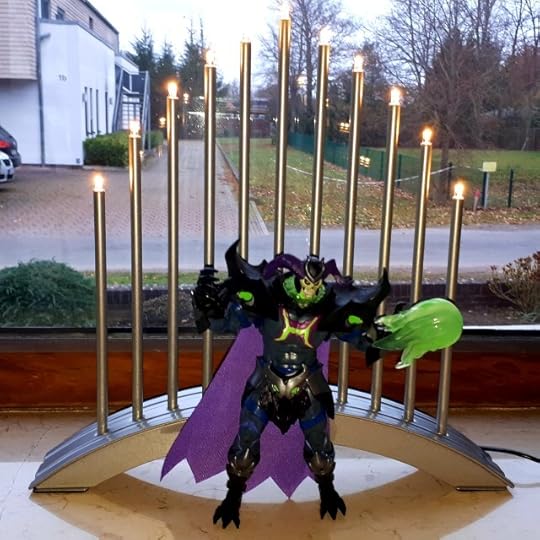
Skelegod with a halo of Christmas lights.
I also couldn’t resist letting Skelegod pose with my Hugo trophy:
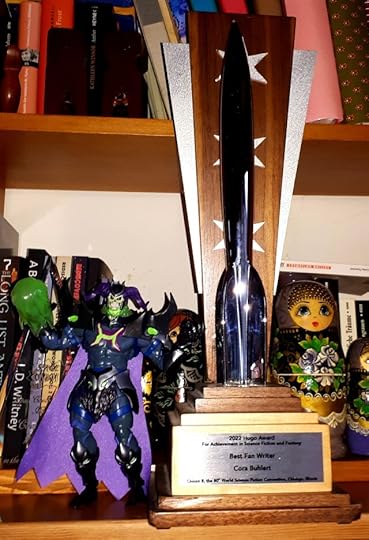 “I, Skelegod, Lord of Destruction and Supreme Evil in the Universe, claim this Hugo Award by the purity of havoc.”
“I, Skelegod, Lord of Destruction and Supreme Evil in the Universe, claim this Hugo Award by the purity of havoc.”
As for what happens when I introduce Skelegod to the rest of my Masters of the Universe figures, well, keep tuned for updates.
December 2, 2022
Fancast Spotlight: Fiction Fans Podcast
After the Hugos is before the Hugos, so here is another Fancast Spotlight for your consideration. For more about the Fanzine/Fancast Spotlight project, go here. You can also check out the other great fanzines and fancasts featured by clicking here.
Today’s featured fancast is the Fiction Fans Podcast, a podcast, which as the name implies, is about reading and discussing books.
Therefore, I’m happy to welcome Sara and Lilly of Fiction Fans to my blog today.
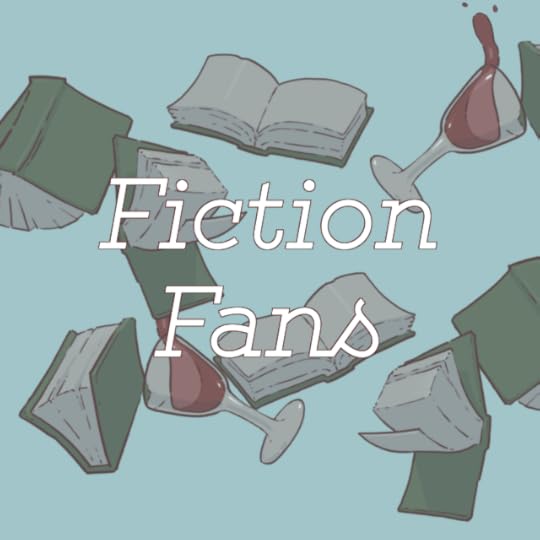
Artwork by @meattankarcana on Instagram
Who are the people behind your podcast or channel?
Sara (social media person and Keeper of the Calendar) and Lilly (editor extraordinaire).
Why did you decide to start your podcast or channel?
Lilly called me one afternoon in late 2020 to say we should start a podcast, because she wanted to read more books. I was utterly unconvinced–I like reading, but a book podcast sounded like a lot of work. Eventually she wore me down (our first planning document, which she sent over to me after that call, was called “You won’t escape my podcast idea”) and I’m actually really glad she did. It’s mostly an excuse to hang out for a couple of hours. The fact that we’re recording our conversation and putting it out there for the world to listen is almost incidental.
What format do you use for your podcast or channel and why did you choose this format?
We decided to do audio-only because it’s lower-key. Video editing is a lot more effort and also would require that we look at least semi-presentable when recording.
In terms of episode format, we always spend some time chatting about a good thing that’s happened recently and what we’re currently reading (not podcast-related) at the beginning of the episode, before we actually start discussing the book of the week. We like to have an initial section where we talk about non-spoiler themes or character motivations, before we dive in to a meatier full-on spoiler discussion of the book. We figured that if we were listening to a podcast about a book we hadn’t read, we would want a chance to stop listening before any major plot twists were spoiled for us. Be the podcast you want to listen to, right?
The fan categories at the Hugos were there at the very beginning, but they are also the categories which consistently gets the lowest number of votes and nominations. So why do you think fanzines, fancasts and other fan projects are important?
Obviously we’re a bit biased, being an amateur podcast, but I think that fan projects are incredibly important. Fan projects allow so much more in-depth discussion and consideration of a work that is extremely important for any topic, but especially art. A great example of that is in our Terry Pratchett readthrough, an author we love, but whose books we occasionally lambast. Fans have a spectacular capacity to criticize what they love and that’s a crucial part of any discussion.
In the past twenty years, fanzines have increasingly moved online and fancasts have sprung up. What do you think the future of fan media looks like?
I think as technology and platforms become more accessible, we’ll continue to see a proliferation of fan media. It’s so much easier to start a project like a podcast these days than it was even ten years ago, and it’s a lot easier to promote a project as well with the various social media platforms available.
The four fan categories of the Hugos (best fanzine, fan writer, fan artist and fancast) tend to get less attention than the fiction and dramatic presentation categories. Are there any awesome fanzines, fancasts, fan writers and fan artists you’d like to recommend?
I want to particularly shout out SFF Addicts Podcast. The host, Adrian Gibson, is doing some really incredible work with his panel episodes. Interviewing guests on a podcast takes a lot of skill, and if I could interview or moderate half as well as he does, I’d be happy.
Where can people find you?
We can be found pretty on all the major podcast platforms (Spotify, Apple Podcasts, Podcast Addict, etc).
On social media we’re usually @fictionfanspod and we can be found on Twitter (while it lasts, we’re probably most active there), Hive, Instagram, and TikTok.
Our Mastodon account is @fictionfanspod@mastodon.social
We also have a very chill discord to talk about books: https://discord.gg/dpNHTWVu6b and our website https://www.fictionfanspodcast.com/ where we post our episodes, author interviews, and the occasional written book review.
Thank you, Sara and Lilly, for stopping by and answering my questions.
Do check out Fiction Fans, cause it’s a great podcast.
***
Do you have a Hugo eligible fanzine/-site or fancast or a semiprozine and want it featured? Contact me or leave a comment.
November 29, 2022
Indie Speculative Fiction of the Month for November 2022

It’s that time of the month again, time for “Indie Speculative Fiction of the Month”.
So what is “Indie Speculative Fiction of the Month”? It’s a round-up of speculative fiction by indie and small press authors newly published this month, though some October books I missed the last time around snuck in as well. The books are arranged in alphabetical order by author. So far, most links only go to Amazon.com, though I may add other retailers for future editions.
Once again, we have new releases covering the whole broad spectrum of speculative fiction. This month, we have urban fantasy, epic fantasy, YA fantasy, fantasy mystery, paranormal mystery, paranormal romance, science fiction romance, space opera, military science fiction, YA science fiction, dystopian fiction, LitRPG, horror, demons, dwarves, ghosts, exorcists, Norse gods, aliens, cyborgs, space marines, climate change, haunted roads, haunted prisons, magical schools, Pandora’s box, crime-busting witches, arsekicking grandmothers, veterinarians in space, and much more.
Don’t forget that Indie Speculative Fiction of the Month is also crossposted to the Speculative Fiction Showcase, a group blog run by Jessica Rydill and myself, which features new release spotlights, guest posts, interviews and link round-ups regarding all things speculative fiction several times per week.
As always, I know the authors at least vaguely, but I haven’t read all of the books, so Caveat emptor.
And now on to the books without further ado:
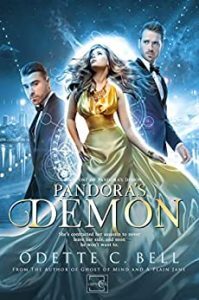 Pandora’s Demon by Odette C. Bell:
Pandora’s Demon by Odette C. Bell:
Oh dear. Ruby Whittle’s already down on her luck. Soon, she’ll descend much further into something far worse. When she inherits Pandora’s box and finds out Hell’s real – and coming for her – she needs help. And only one demon can save her.
Blake is the Sixth Son of Satan, a man just as arrogant as he is handsome. When he spies Ruby, the half-breed, he plans to kill her. But when Ruby contracts him with one of his father’s rings, she binds them. Blake must now protect her. Through Heaven, through Hell, and through one of the greatest plots the universe has ever seen.
A dark force is rising, and though Blake really doesn’t like it, Ruby is the only half-breed who can help him defeat it. To do that, she’ll make him discover the beating organ between the junction of his fourth and fifth ribs. And by the end of this demonic tale, she’ll rip his heart right out and lay it as his feet. For when a demon falls in love, things get sticky.
…
Pandora’s Demon follows a prince and a half-breed battling to save the universe. If you crave your contemporary fantasies with action, humor, romance, and fun, grab Pandora’s Demon Book One today and soar free with an Odette C. Bell series.
Pandora’s Demon is the 2nd Sons of Satan series. A witty, action-packed, light romance world where Satan’s sons must find love, but only after it sticks a ring on their finger. If you like your urban fantasies packed full of charming smiles, arrogant demons, and sprinkles of romance, dive in today.
 The Master of Puppets by Molly J. Bragg:
The Master of Puppets by Molly J. Bragg:
Jakari, an alien assassin, receives orders taking her to a primitive alien world. She expects the mission to be like any other. Get in, eliminate the target and get out again. Instead, when she arrives, she finds out that one of the leaders of the fascist Char Oram is there, seeking to turn the inhabitants into mindless soldiers that could tip the war in favor of the Char.
Hayami Takahashi follows a strange woman down a dark street and all she wants is to make sure the woman didn’t wind up as the next victim of a kidnapping ring working the streets of Dallas. Instead, she finds herself in the middle of a civil war between two factions of shape shifting cyborg aliens.
After Jakari saves Hayami from becoming a test subject in a Char lab, the two of them are working together to stop a war that’s been raging for nine thousand years.
 Smoke and Hellfire by Kristen Brand:
Smoke and Hellfire by Kristen Brand:
Keep calm and call an exorcist.
Most people don’t believe in the supernatural—at least until a ghost starts making the walls in their house bleed. That’s when they call Bea Romo Reyes. She’s my best friend and roommate, and she works as a freelance exorcist and paranormal consultant. Meeting her plunged me into a supernatural world both wonderful and terrifying, and I wouldn’t trade it for anything.
But there’s something Bea’s not telling me, and her secret might be more dangerous than the demons she’s hired to exorcise.
Smoke and Hellfire contains four episodic, novelette-length stories:
The Scent of Brimstone
When my friend dies mysteriously and her house stinks of brimstone, I know a demon is to blame. And when it threatens my friend’s family, I do the only thing I can think of: I call a professional exorcist.
An Unfair Bargain
Bea and I investigate a missing woman who wandered into the forest at night like she was possessed. But the truth of what happened is—if possible—even worse than demonic possession, and we might not make it out of the forest alive.
Drowning, Drowning
A ghost tour in St. Augustine accidentally raises a vengeful spirit who starts picking off the tour group one by one. Can Bea banish the ghost in time to save the young tour guides from a watery grave?
The Corporate Job
I always knew corporations were evil, but this one takes it a step further when they summon a demon to increase their profit margins. With a possessed CFO chained up in the basement and Bea’s exorcism failing, the demon reveals a sinister secret that could change everything.
 Marines Never Die by Jonathan P. Brazee and J.N. Chaney:
Marines Never Die by Jonathan P. Brazee and J.N. Chaney:
The war continues…and the body count rises.
With humanity joining the alliance to fight the Naxli invaders, the war should be turning in their favor.
Unfortunately, the enemy must not have gotten that memo.
Across the galaxy, the Naxli strive for total domination. To create a stronger resistance, Gunny Pelletier is sent to work with the various races, but he and his team soon discover that reaching common ground and coordinating military action is far more difficult than they’d imagined.
But the Naxli aren’t pausing to give the allied races time to work out the kinks, which means it’s time for humanity to go at it alone once again. Bureaucracy must wait while Marines do what Marines do best.
Besides, humanity owes the Naxli a few paybacks, even if the rest of the allied races are not willing to join the mission.
 Roadside Horrors by Cora Buhlert:
Roadside Horrors by Cora Buhlert:
Roads are interstitial spaces, their only purpose to take you from one place to another.
In most cases, roads only connect two places in the real world. But occasionally, a road crosses the borderline into the unknown. That’s when things can come through, terrible things that lurk by the side of the road for the unwary traveller.
A car full of drunk teenagers on their way home from a festival encounter something terrible in the woods of Northwest Germany…
Nina delivers newspapers in the wee hours of the night and pays no attention to the pets that go missing in the neighbourhood… or the strange sounds echoing from the sewer grilles…
On a lonely country road in northern Spain, a truck driver encounters the ghosts of a terrible past…
So buckle up and get ready to meet the horrors that lurk by the side of the road. But be careful, because every encounter with them might be your last…
This is a collection of three tales of roadside horror of 9500 words altogether by Hugo winner Cora Buhlert.
Seattle native Matti Puletasi has the strength of a bear, the stamina of an ox, and a magical hammer inherited from her dwarven mother.
She’s happy renovating homes and occasionally thumping bad guys until she learns of a mysterious artifact hidden under the house she’s working on. Everybody from humans to orcs to werewolves wants it, and they’re willing to kill to get it. Things go from bad to worse when someone frames her for murder.
The only person interested in helping her is a haughty elf assassin from another realm. He’s handsome, powerful, and deadly, but he’s got an agenda of his own. She dare not trust him—or be attracted to him.
But if she can’t clear her name, the assassin will be the least of her worries.
Ben used to dream about being famous. He didn’t expect to wind up infamous instead.
Now he’s stuck in the middle of the most grotesque contest in the galaxy, racing against time and some of the most dangerous and deranged psychopaths in the Spiral to rescue his crew from a bloody battle royale.
The clock is ticking. The leaderboard is reset. Millions are watching. There can be only one winner, and if he ever wants to see his best friend again…
It had better be him.
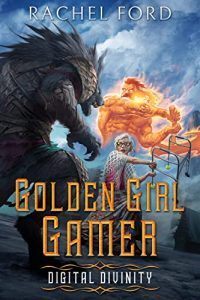 Digital Divinity by Rachel Ford:
Digital Divinity by Rachel Ford:
A shadow hangs over Midgard. Malevolent forces stir in Asgard. Out of the chaos will rise… a grandmother?
Barbara Callaghan assumed she’d spend her retirement peacefully, playing bingo and babysitting her grandson. Not fighting giants and wrangling unruly gods.
But when she finds herself the victim of a digital scam, trapped as a barbarian brawler in a game world generated from old Earth mythologies, she knows she will either adapt or perish. And Barbara has never been a quitter.
To survive this harsh rendering of Midgard, Barbara must win the patronage of one of the Asgardian gods. With the help of her disloyal companion Carwyn, an elven NPC with more warrants out on him than coins in his purse, she seeks out Asgard.
She discovers a world in turmoil, with powerful gods at each other’s throats, rogue giants causing chaos at every turn, and dwarven craftsmen at war with one another.
A world that needs the practical, no-nonsense touch of a grandmother—and the occasional brute strength of a barbarian.
 Eat, Drink and Be Witchy by Lily Harper Hart:
Eat, Drink and Be Witchy by Lily Harper Hart:
Life is going well for Hali Waverly. She owns her own tiki bar at one of St. Pete Beach’s premiere resorts and her life is settled for the first time in…well, a really long time. On top of that, a local private investigator she keeps crossing paths has decided it’s time to date, something that both thrills and terrifies her.
All of that changes when a body turns up on one of the resort’s balconies and the owner of the resort is passed out inside with no recollection of what happened. Police think Franklin Craven could’ve killed her. The only problem is the marks on her body could also be attributed to an animal…and maybe one of a supernatural variety.
Worried about his freedom, Franklin hires Gray to solve the case. That means Hali and Gray are going to be investigating together…again.
St. Pete is full of paranormals, but Gray and Hali are looking for one specific one, a murderer who has a clear goal, even if it’s one they can’t quite ascertain.
Sparks are about to fly, in more ways than one, and death is on the cocktail menu. Hali and Gray want a chance at a future. They have to get through the present to make it happen.
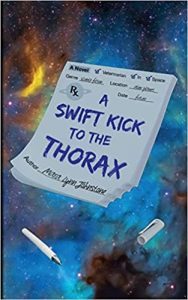 A Swift Kick to the Thorax by Mara Lynn Johnstone:
A Swift Kick to the Thorax by Mara Lynn Johnstone:
When space poachers release Earth animals on an alien world, threatening a fragile new alliance, they anger the wrong people. A veterinarian, an accountant, and a furious sign-language-fluent gorilla are coming for them.
Robin enjoys being one of the only humans around: an exotic outsider, strange and tall, with no shell and only two arms. Consulting for locals who want to keep Earth pets is a fine job. But when a swarm of rabbits invade town and humanity is blamed, everything unravels.
If Robin wants to save the alliance between two planets – and keep from getting sent home in disgrace – she has to prove that a powerful crime ring is behind the crisis. Luckily for her, she makes friends who are eager to help: from planetside, from the nearby space station, and recently escaped from the poacher’s ship.
Those poachers may be bug aliens with an excellent range of vision, but they won’t see this coming.
 Lights, Camera, Witches by Amanda M. Lee:
Lights, Camera, Witches by Amanda M. Lee:
Bay Winchester isn’t in the mood for trouble. It seems to continually find her, however, and this time it’s coming in the form of a television production crew.
Haunted Traditions has made a name for itself as the premiere reality television show catering to paranormal enthusiasts. Of course Hemlock Cove pops up on their radar. What they want most of all is an interview with Bay, the local newspaper owner and expert on all things Hemlock Cove, and a shot of magic happening in real time wouldn’t hurt either.
The woman in question is not having it.
When a body drops in an alley, it’s bad enough that the production crew is on site. What makes it worse is that the body is glowing … and there’s no hiding it. There’s no telling why it’s glowing either. It’s a mystery.
Bay and her husband Landon are convinced the body has something to do with a new meth gang that has taken over a chain of lake cabins on the outskirts of town. They just have to prove it.
Between dodging the television crew—who have taken up residence in The Overlook—and chasing a monster, the Winchesters have their hands full … and that’s not counting the family members who have decided they want to become television stars.
Bay is used to fighting evil. What she’s not used to is having to dodge potential exposure in the process.
The Winchesters are facing a battle. Now they just have to figure what side it’s coming from.
It’s a fight to the finish … and if the television crew catches them, it’s all over.
It’s lights, cameras, action in Hemlock Cove … and death may soon follow.
 The Quarrygate Gambit by Marshall Ryan Maresca:
The Quarrygate Gambit by Marshall Ryan Maresca:
Mixing urban and high fantasy, the fourth Streets of Maradaine novel follows the crew of outlaws led by the Rynax brothers as they struggle to protect the city they love.
After having thwarted some of the forces responsible for ruining their lives, reformed thieves Asti and Verci Rynax and the rest of the Holver Alley Crew had mostly settled back into sedate lives as upright citizens of Maradaine. But when they are suddenly arrested in mysterious circumstances, they find themselves in Quarrygate Prison, which tests the limits of their cunning and skill. While Verci struggles to keep their friends alive and safe in the prison, Asti gets pulled into a mysterious scheme in the underbelly of the prison, teaming him up with some of the most dangerous people in Maradaine. The cracks in Asti’s tenuous sanity get torn open as he is thrown into a cat-and-mouse game with one of the city’s most infamous killers.
Meanwhile back in their neighborhood, Verci’s wife Raych is desperate to help him and Asti and get them home. When her attempts to go through proper channels fail, she accepts a ludicrous deal from the local crime boss: Verci and Asti’s freedom in exchange for her pulling off a daring, nigh-impossible heist that would challenge even seasoned thieves. Raych doesn’t know how a simple baker like her could hope to succeed at such a task, but she will use every trick and wild idea she has to help her family. None of the Rynaxes will rest until they are free from Quarrygate and together at home again, no matter the risk, no matter the cost.
A rogue cyborg. A talking badger. A bounty job that goes incredibly wrong.
Aaron is perfectly content to chase bounties in his run-down little space ship, avoid human interaction at all cost, and lay low from the cyborg planet that created him. But when he and Bat—his half-robotic badger companion (who talks just a little too much)—chase their largest bounty ever, they run head-first into not only some dangerous criminals, but other cyborgs much stronger than them, and worst of all, a handful of humans who aren’t going anywhere.
Their job leads them first to Yayth, a backwater planet nearly as inhospitable as it is frigid. On a planet this abandoned, their target should be an easy find. Until a storm rolls in that freezes even the engines of starships. Aaron and Bat find themselves trapped not only with their bounty, but with some bystanders determined to get in the way, and something monstrous wanting to crack its way out of the ice.
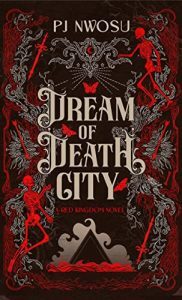 Dream of Death City by P.J. Nwosu:
Dream of Death City by P.J. Nwosu:
Chilling, dark fantasy with a heavy dose of Sherlock Holmes in this new series of twisty mysteries in fantasy worlds.
Pale moths haunt an icy frontier. Beneath the shadow of a drowned death god, a frozen body is unearthed from the snow.
Investigators arrive to a superstitious island to solve a brutal crime. Among them is a lowly slave desperate to prove her worth and a soldier with dark dreams. Neither are prepared for what they find.
Death City is a strange and violent frontier, and no one who survives comes back clean.
First though, Thora and Diem must survive.
Welcome to the Red Kingdom.
A scientist filled with doubts. A four-year-old facing death. A momentous journey to save her.
For Belor, life in Cerulis City provides a myriad of comforts: endless food, a nice and warm home, and his dream job. He has life all planned out.
But when four-year-old Saya is about to be executed, Belor makes an irreversible decision that upheaves his entire life.
Soon, the pair find themselves on the run, fighting for survival. Saya is no ordinary four-year-old. She is a half-Aeterna, a race of beings banned from Cerulis City.
Will Belor be able to keep Saya alive?
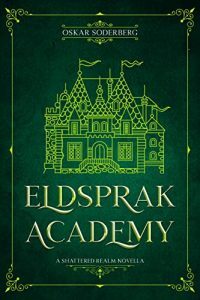 Eldsprak Academy by Oskar Soderberg:
Eldsprak Academy by Oskar Soderberg:
What do you get when you take a geomancer with a bone to pick, a secret aeromancer, and a healing hydromancer, and put them in a practice yard with a commoner ranger and a bunch of noble sons of Eldsprak Kingdom?
A group of individuals who all need to win The Academy Tournament for reasons of their own!
It’s up to Goslin to make them work together. If they’re to have any sort of chance at coming out on top, they’ll need to adapt and change. Can they start to pull in the same direction, or are they doomed to fall over each other in their eagerness to prove themselves on the field of battle?
How will they conquer The Tournament when one of their many opponents is Goslin’s own brother, the champion from last year’s tournament, and his hireling pyromancer who can send blasts of fire from the palm of his hand?
All the tyrannical gods may have been killed by The Heroes of old, but who cares about things like that when sword strikes sword and bursts of magic erupt in the streets of Fyrie, Eldsprak’s capital, where The Tournament is just starting?
 Orphans of Canland by Daniel Vitale:
Orphans of Canland by Daniel Vitale:
It’s 2088, and the dust has settled on America, decades after an environmental collapse. The eco-totalitarian organization, WORLD, has reconfigured society with the intention of restoring nature. Twelve-year-old eternal optimist Tristan Weekes lives in what he believes must be paradise: Canland, an agrarian California desert-greening project. However, Tristan’s life-defining medical condition, analgesia, prevents him from feeling physical pain, leaving his brain’s stress centers unresponsive to everything from ego-blows to heatwaves.
Well-intended, curious, and wielding a stunning vocabulary, Tristan loves to listen to the subversive theories spouted by his older brother, Dylan, a drug-addicted satellite hacker. He also wants to prove his independence to his mother, Helena, a powerful population control-extremist. Meanwhile, all around him, the survivors of the environmental collapse are just working toward a better tomorrow. But when a slew of violent acts befalls Canland, Tristan must confront certain truths about the community he loves-including his family’s secrets, his own involvement in the horrors enacted by WORLD, and the debts that are owed to the orphans of Canland.
In this work of literary fiction, set against the backdrop of a frighteningly plausible dystopia, Daniel Vitale explores the fate of our planet, the nature of family, and the duty of science, as Orphans of Canland asks: What does it mean to belong on Earth?
November 28, 2022
Indie Crime Fiction of the Month for November 2022

Welcome to the latest edition of “Indie Crime Fiction of the Month”.
So what is “Indie Crime Fiction of the Month”? It’s a round-up of crime fiction by indie authors newly published this month, though some October books I missed the last time around snuck in as well. The books are arranged in alphabetical order by author. So far, most links only go to Amazon.com, though I may add other retailers for future editions.
Our new releases cover the broad spectrum of crime fiction. We have hardboiled mysteries, cozy mysteries, holiday mysteries, historical mysteries, Victorian mysteries, Jazz Age mysteries, WWII mysteries, paranormal mysteries, fantasy mysteries, crime thrillers, legal thrillers, psychological thrillers, police officers, FBI agents, lawyers, private investigators, amateur sleuths, serial killers, gangsters, drug dealers, missing persons, crime-busting witches, crime-busting socialites, crime-busting butlers, crime-busting realtors, murderous movie sets, murderous cruises, creepy hotels, haunted prisons, murder and mayhem in London, Brighton, Paris, San Francisco, Chicago, Florida, Nevada and much more.
Don’t forget that Indie Crime Fiction of the Month is also crossposted to the Indie Crime Scene, a group blog which features new release spotlights, guest posts, interviews and link round-ups regarding all things crime fiction several times per week.
As always, I know the authors at least vaguely, but I haven’t read all of the books, so Caveat emptor.
And now on to the books without further ado:
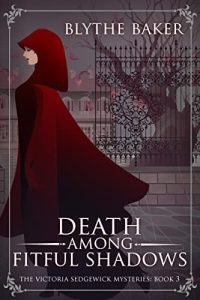 Death Among Fitful Shadows by Blythe Baker:
Death Among Fitful Shadows by Blythe Baker:
Victoria Sedgewick’s acceptance of a private case for a wealthy lady leads her into deeper danger than she ever imagined. But it isn’t only her own life at peril…
When her infant son is drawn into the dangerous game, Victoria enlists the help of Branwell Keats. Together, the pair must risk everything to win at all costs.
 Murder and Mistletoe by Beth Byers:
Murder and Mistletoe by Beth Byers:
Holiday, Murder, Mayhem…what else could be expected when Vi and friends gather for Christmas?
The friends have gathered for a major holiday in the country. They’ve brought in those they love. Excessive gifts have been purchased and feasts have been planned.
Once again, a body is discovered. This time under the mistletoe. Will Vi, Jack, and the rest discover the murderer before St. Nick arrives? Or will the holidays be ruined?
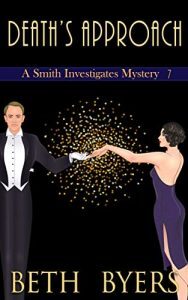 Death’s Approach by Beth Byers:
Death’s Approach by Beth Byers:
It has been quite some time since Smith’s quarry has eluded him so fully. A woman was murdered in his home, he’s removed his family to Jack and Vi’s house, he’s pulled in all his friends to help, and he still can not find the engineer of his friend’s death.
Only, the noose has been tightening. The traps have been laid, and now Smith will have to win against one of the cleverest villains he’s had to track down. All while ensuring he doesn’t lose anyone else. Join Smith on his most fraught journey yet and discover the person who has thwarted him thus far.
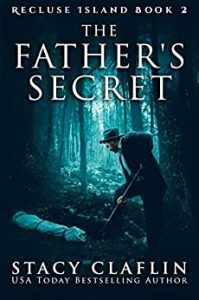 The Father’s Secret by Stacy Claflin:
The Father’s Secret by Stacy Claflin:
If you can’t trust family, who can you trust?
After a body is unearthed near Chris and Vanessa’s newly-acquired hotel, all eyes are on them. They may be the owners, but they’re also the newest residents. Everyone suspects them.
Not only that, but Chris is hiding multiple secrets from his new wife and rather than opening up her, he buries himself deeper in his troubles.
Meanwhile the oldest daughter is secretly dating one of the hotel staff — and only Chris knows how dangerous the boy is. By the time he finds out about their relationship, it might be too late to save his stepdaughter…
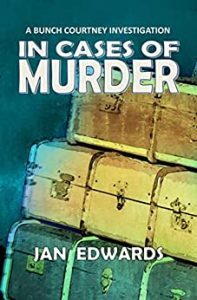 In Cases of Murder by Jan Edwards:
In Cases of Murder by Jan Edwards:
When the body of Laura Jarman is discovered crammed inside a steamer trunk and dumped on a Brighton railway station platform, her wealthy industrialist family is shouting for answers, but their reluctance to co-operate with the investigation arouses suspicion. Shortly after, a second body – Laura’s flatmate Kitty – is discovered in similar circumstances. What links Laura and Kitty to the private gentlemen’s parties held in a country house on the edge of sleepy Wyncombe village, and what is Laura’s family so desperate to conceal? Bunch Courtney and DCI William Wright find themselves racing along a convoluted trail through munitions factories and London clubs to a final shocking end.
Private Investigator Dev Haskell gets a call from Tubby Gustafson. There’s a car waiting for Dev just outside his office. If he doesn’t want to take the ride, he’ll have to drive himself to the Emergency room. Dev decides whatever he was involved in can wait and is driven to Tubby’s mansion.
Turns out Tubby wants any and all information on east coat mobster Alex Chillcot who’s rumored to be moving into town. The more Dev uncovers, the worse Chillcot looks. Almost immediately the bodies begin to pile up.
In case that isn’t bad enough, Dev’s latest squeeze, Layla, works every year as a sexy elf at Santa’s Workshop. There’s only one problem, Santa turns out to be an obnoxious drunk who frightens children and tells them he won’t come to their house. Dev gets more involved than he planned.
Better get your copy now and see if Dev can save Christmas…
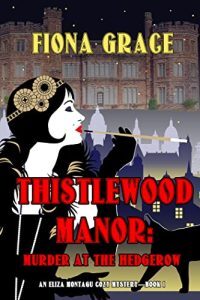 Thistlewood Manor: Murder at Hedgerow by Fiona Grace:
Thistlewood Manor: Murder at Hedgerow by Fiona Grace:
For centuries, Thistlewood Manor has stood as home to the Montagu family, a beacon to British aristocracy in rural England. But it’s 1928, and in this new age of women’s rights, Eliza Montagu, 27, a free spirit, has turned her back on her family to live an artist’s life in London.
But when an unexpected family crisis arrives, Eliza has no choice but to return home to the demands of her family, to help her father, and to meet the Lord they hope she’ll marry.
When a dead body appears in the midst of the reunion, Eliza quickly realizes that if she doesn’t solve the mystery, the crime may just be pinned on her, and dash her hopes for a life as a free woman.
A charming historical cozy mystery series that transports readers back in time, THISTLEWOOD MANOR is mystery at its finest: spellbinding, atmospheric and impossible to put down. A page-turner packed with shocking twists, turns and a mystery that’s hard to solve, it will leave you reading late into the night, all while you fall in love with its unforgettable heroine.
 Eat, Drink and Be Witchy by Lily Harper Hart:
Eat, Drink and Be Witchy by Lily Harper Hart:
Life is going well for Hali Waverly. She owns her own tiki bar at one of St. Pete Beach’s premiere resorts and her life is settled for the first time in…well, a really long time. On top of that, a local private investigator she keeps crossing paths has decided it’s time to date, something that both thrills and terrifies her.
All of that changes when a body turns up on one of the resort’s balconies and the owner of the resort is passed out inside with no recollection of what happened. Police think Franklin Craven could’ve killed her. The only problem is the marks on her body could also be attributed to an animal…and maybe one of a supernatural variety.
Worried about his freedom, Franklin hires Gray to solve the case. That means Hali and Gray are going to be investigating together…again.
St. Pete is full of paranormals, but Gray and Hali are looking for one specific one, a murderer who has a clear goal, even if it’s one they can’t quite ascertain.
Sparks are about to fly, in more ways than one, and death is on the cocktail menu. Hali and Gray want a chance at a future. They have to get through the present to make it happen.
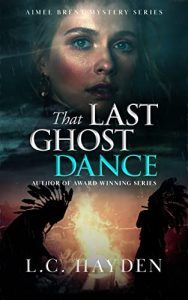 That Last Ghost Dance by L.C. Hayden:
That Last Ghost Dance by L.C. Hayden:
Unraveling Secrets
Kuyuidokado, Nevada’s Paiute’s chief councilman, is murdered while performing the Ghost Dance, a dance created by the Native Americans to bring peace and restore their land to the way it used to be.
Nevada reporter Aimee Brent is granted an exclusive to investigate the crime and report to the world what Kuyuidokado was really like. Aimee is eager to travel to Nixon to investigate the murder. She needs to be away from her editor/fiancé with whom she has just broken up with.
Upon arriving at Nixon, Aimee finds that not everyone or everything is as should be. She stumbles upon secrets—secrets that could lead to her death. It’s up to Aimee to unravel them before more people fall victim to the grand scheme of That Last Ghost Dance.
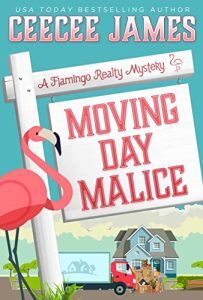 Moving Day Malice by CeeCee James:
Moving Day Malice by CeeCee James:
Stella O’Neil can hardly believe her luck…her favorite romance writer is moving to town and wants Stella to be her agent! Stella’s fantasy of becoming bff’s and getting to read advance copies is cut brutally short when Alicia BeeWater is murdered before she can even move in to her new home. Suspects abound in this all new edition to the Flamingo Realty series.
The police focus on Alicia’s stalker, who is the author’s #1 fan, Stella isn’t so sure. Then she covers some clues that send her down a different path… is it the truth or a trap?
 Lights, Camera, Witches by Amanda M. Lee:
Lights, Camera, Witches by Amanda M. Lee:
Bay Winchester isn’t in the mood for trouble. It seems to continually find her, however, and this time it’s coming in the form of a television production crew.
Haunted Traditions has made a name for itself as the premiere reality television show catering to paranormal enthusiasts. Of course Hemlock Cove pops up on their radar. What they want most of all is an interview with Bay, the local newspaper owner and expert on all things Hemlock Cove, and a shot of magic happening in real time wouldn’t hurt either.
The woman in question is not having it.
When a body drops in an alley, it’s bad enough that the production crew is on site. What makes it worse is that the body is glowing … and there’s no hiding it. There’s no telling why it’s glowing either. It’s a mystery.
Bay and her husband Landon are convinced the body has something to do with a new meth gang that has taken over a chain of lake cabins on the outskirts of town. They just have to prove it.
Between dodging the television crew—who have taken up residence in The Overlook—and chasing a monster, the Winchesters have their hands full … and that’s not counting the family members who have decided they want to become television stars.
Bay is used to fighting evil. What she’s not used to is having to dodge potential exposure in the process.
The Winchesters are facing a battle. Now they just have to figure what side it’s coming from.
It’s a fight to the finish … and if the television crew catches them, it’s all over.
It’s lights, cameras, action in Hemlock Cove … and death may soon follow.
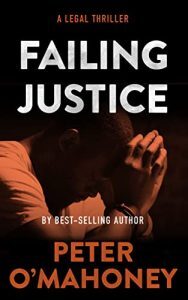 Failing Justice by Peter O’Mahoney:
Failing Justice by Peter O’Mahoney:
Fighting for justice in Chicago is a deadly game…
On Chicago’s South Side, the death of a five-year-old girl in a drive-by shooting captures the city’s attention. At the request of a desperate mother, defense attorney Tex Hunter agrees to defend the accused against a murder charge. With an entire city against them, Hunter struggles to find the truth about the incident.
To uncover the facts, to expose the truth, Hunter must battle against ruthless gangs, corrupt officers, and a culture of silence. Probing deep into the violent past of the disadvantaged neighborhood, Hunter uncovers information that will shock everyone.
If Hunter can’t expose the facts in court, an innocent man might be convicted… while the real killer stalks his every move.
Can Hunter reveal the truth in court? Or will silence continue to rule the streets?
 The Quarrygate Gambit by Marshall Ryan Maresca:
The Quarrygate Gambit by Marshall Ryan Maresca:
Mixing urban and high fantasy, the fourth Streets of Maradaine novel follows the crew of outlaws led by the Rynax brothers as they struggle to protect the city they love.
After having thwarted some of the forces responsible for ruining their lives, reformed thieves Asti and Verci Rynax and the rest of the Holver Alley Crew had mostly settled back into sedate lives as upright citizens of Maradaine. But when they are suddenly arrested in mysterious circumstances, they find themselves in Quarrygate Prison, which tests the limits of their cunning and skill. While Verci struggles to keep their friends alive and safe in the prison, Asti gets pulled into a mysterious scheme in the underbelly of the prison, teaming him up with some of the most dangerous people in Maradaine. The cracks in Asti’s tenuous sanity get torn open as he is thrown into a cat-and-mouse game with one of the city’s most infamous killers.
Meanwhile back in their neighborhood, Verci’s wife Raych is desperate to help him and Asti and get them home. When her attempts to go through proper channels fail, she accepts a ludicrous deal from the local crime boss: Verci and Asti’s freedom in exchange for her pulling off a daring, nigh-impossible heist that would challenge even seasoned thieves. Raych doesn’t know how a simple baker like her could hope to succeed at such a task, but she will use every trick and wild idea she has to help her family. None of the Rynaxes will rest until they are free from Quarrygate and together at home again, no matter the risk, no matter the cost.
 Dream of Death City by P.J. Nwosu:
Dream of Death City by P.J. Nwosu:
Chilling, dark fantasy with a heavy dose of Sherlock Holmes in this new series of twisty mysteries in fantasy worlds.
Pale moths haunt an icy frontier. Beneath the shadow of a drowned death god, a frozen body is unearthed from the snow.
Investigators arrive to a superstitious island to solve a brutal crime. Among them is a lowly slave desperate to prove her worth and a soldier with dark dreams. Neither are prepared for what they find.
Death City is a strange and violent frontier, and no one who survives comes back clean.
First though, Thora and Diem must survive.
Welcome to the Red Kingdom.
Nicky Lyons, 28, a missing-persons specialist in in the FBI’s Behavioral Analysis Unit, is an expert at tracking down abductees and bringing them home. The connection is personal: after Nicky’s twin sister was abducted at 16, Nicky made stopping kidnappers her life’s work.
But when Nicky is assigned to a new task force in south Florida dedicated to finding the recently missing, she soon realizes she’s up against a serial killer more diabolical than she imagined. Her only hope at finding these girls is entering his mind and outwitting him at his own game.
Nicky and her new partner, both headstrong, don’t see eye to eye, and the case opens decade-old wounds related to her sister’s disappearance. Can Nicky keep her demons at bay in time to save the victims?
Nicky, haunted by the demons of her own missing sister, knows that time will be of the essence in bringing these girls home—if it is not already too late.
 Say It Isn’t So by Willow Rose:
Say It Isn’t So by Willow Rose:
It is a dream come true for ten-year-old Becky when her parents take her and her younger sister on a cruise to the Bahamas.
But nothing is how it is supposed to be when her parents can’t stop fighting, and soon the trip turns out to be a true nightmare.
It becomes a puzzling mystery when she and her sister disappear as the ship is about to dock in Coco Cay.
How do you disappear on a cruise ship?
Why can’t they be found?
Could they have fallen overboard?
FBI profiler Eva Rae Thomas is flown in to assist on this bizarre but very time-sensitive case.
The parents both claim to know what happened to their children. Each of them blames the other for kidnapping them.
Who is telling the truth?
Meanwhile, the passengers are not allowed to leave the ship as the search continues, causing the tension to rise onboard. It becomes a race against time as a frustrated Eva Rae Thomas tries to find out what happened in the hours up until the disappearance of the two children.
When one of the children is found dead, she realizes this is more than a simple case of a parental dispute.
There’s a killer onboard.
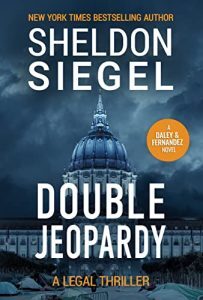 Double Jeopardy by Sheldon Siegel:
Double Jeopardy by Sheldon Siegel:
He was just trying to help a friend.
After three tours in Afghanistan, homeless and hooked on painkillers, Lenny was working to pull his life together. He gave Annie the last of his oxy pills to ease the pain from her shoulder injury. But when she was found dead in her tent the next morning, Lenny wound up in jail accused of killing her with fentanyl.
After a year behind bars, Lenny was finally about to get his day in court. But the uncertainty of the coronavirus threatened to delay his justice further.
The evidence is compelling: a pill bottle with Lenny’s name, fingerprints, and DNA is found in the tent of the decedent, Annie Parker. There are six pills laced with fentanyl inside the bottle. Lenny insists he’s innocent. He claims he gave Annie three of his legitimate OxyContin pills that he got from the V.A. When Lenny’s public defender is called away to help a family member sick with COVID, Mike Daley steps in to take over his case. Contrary to Mike’s advice, Lenny rejects a continuance leaving Mike little time to prepare for trial.
With the City on the verge of closing down, Mike must fly solo at trial as he desperately searches for witnesses in the homeless encampments and the drug-infested hotels in the Tenderloin.
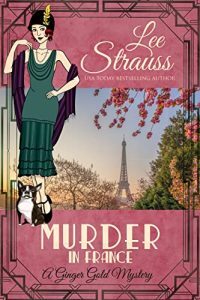 Murder in France by Lee Strauss:
Murder in France by Lee Strauss:
Murder is so sang-froid!
When the Reed family—temporarily exiled to France—is once again safe, Ginger decides to turn the event into a much needed holiday. And the absolute cake is Ginger’s reunion with her American friend Haley Higgins, who is working in France on a practicum to become a lady doctor.
Ginger celebrates the happy reunion by throwing a party at their villa in Paris, but the joyous activities are halted when a body is discovered. Like old times, Ginger puts her detective skills to work while Haley provides her forensic knowledge. As party guests continue to become more suspicious and worthy suspects, Ginger’s own past is soon on trial.
Has a long-ago, war-time “error” resurfaced to steal more than Ginger’s joie de vivre?
November 25, 2022
Retro Review: “The Hanging of Alfred Wadham” by E.F. Benson

“The Hanging of Alfred Wadham” is a short story by E.F. Benson, which was first published in the December 1928 issue of the magazine Britannia and reprinted in the August 1929 issue of Weird Tales. The story may be found online here. This review will also be crossposted to Retro Science Fiction Reviews.
This story is another one which caught my eye via Hugh Rankin’s striking interior art under his Doak pseudonym (Doak was Rankin’s middle name). For some reason, Rankin did several drawings of hangings and executions under the Doak name, such as the interior art for “In a Dead Man’s Shoes”, which I reviewed recently. As before, Rankin also supplied to striking Art Deco cover art for this issue, illustrating the The Inn of Terror by Gaston LeRoux.
Though the standout story in this issue is not the cover story, but “The Shadow Kingdom” by Robert E. Howard, the story which introduced Kull of Atlantis as well as the Serpent Men to the world and is widely considered to be the first sword and sorcery story. I should probably do a Retro Review of that story eventually, especially since it’s also a very good story.
Many authors who published in the pulps are completely forgotten these days and we know little to nothing about them. I feared this might be the case with E.F. Benson, but on the contrary, Benson was actually a very well-known British writer from a family of well-known people. His father was the Archbishop of Canterbury, one of his brothers wrote the words to “Land of Hope and Glory”, another brother was also a writer as well as a priest and his sister was a writer and Egyptologist. To make matters even more impressive, E.F. Benson was a member of the Order of the British Empire. He was also gay and by necessity, given the time during which he lived, closeted.
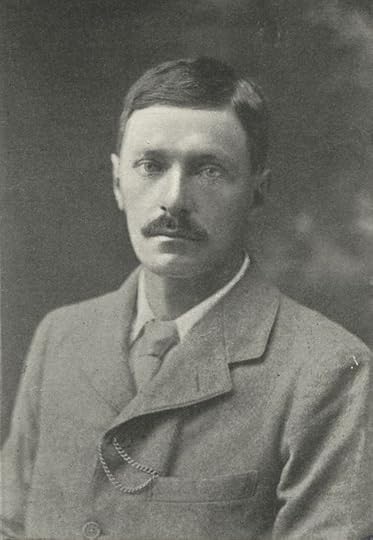 Benson’s most famous work is the Mapp and Lucia series, a series of satirical novels about upper class people in a small town and their petty rivalries. I have to admit that I have never heard of those books, even though they spawned several sequels by other authors, two TV-adaptations, including one as late as 2014, and a lobster dish.
Benson’s most famous work is the Mapp and Lucia series, a series of satirical novels about upper class people in a small town and their petty rivalries. I have to admit that I have never heard of those books, even though they spawned several sequels by other authors, two TV-adaptations, including one as late as 2014, and a lobster dish.
In addition to satirical novels about upper class people being jerks, Benson also wrote a lot of ghost stories and this is what brought him to the attention of H.P. Lovecraft, who wrote admiringly about Benson’s work in “Supernatural Horror in Literature”, and finally to Weird Tales.
But enough about the man. Let’s talk about the story.
Warning! Spoilers beyond this point!
Compared to the other 1929 Weird Tales story featuring a hanging and interior art by Hugh Rankin, “The Hanging of Alfred Wadham” starts off slow with the unnamed first person narrator discussing a séance he attended with one Father Denys Hanbury. The medium conveyed some messages from a recently deceased friend of the narrator and the narrator is certain that the séance proves something, though whether it is communication with the dead or telepathy he is not sure. Father Denys, true to his profession, believes communication with the dead and impossible or demonic, though he is remarkably open-minded with regard to telepathy.
The narrator then explains that the medium talked about something that she could not have gotten from his mind, because the narrator did not know about it, but which was later confirmed by the dead friend’s diary. Father Denys, however, still believes that communication with the dead is dangerous and shares a story of his own.
Such “take within a tale” framing devices were very common in the nineteenth and early twentieth century and pop up quite often in Weird Tales. What is notable about this one is that it’s not only dull – we only ever get vague details about séance and what the medium said – but also written in a very stilted style. The (male) narrator also spends two paragraphs describing the beautiful hands of Father Denys. Even if I didn’t know by this point that E.F. Benson was gay, that paragraph pretty much confirms it.
 Once Father Denys of the beautiful hands starts his story, I hoped things were finally about to get good. Alas, Father Denys, who is a Catholic priest by the way, starts rambling on about the sacrament of confession, why it is important and why a priest may never ever repeat anything he heard in confession, even if remaining silent will have terrible consequences.
Once Father Denys of the beautiful hands starts his story, I hoped things were finally about to get good. Alas, Father Denys, who is a Catholic priest by the way, starts rambling on about the sacrament of confession, why it is important and why a priest may never ever repeat anything he heard in confession, even if remaining silent will have terrible consequences.
Next, we get an description of the crime allegedly committed by the titular Alfred Wadham. Alfred Wadham was the manservant of a “man of loose life” named Gerald Selfe. That “loose life” was the fact that Selfe was having an affair with a married woman. Someone found out about the affair and started blackmailing Selfe. Selfe went to the police, who investigated the case and quickly zeroed in on Alfred Wadham as a suspect.
The police have set a trap for Wadham, when Selfe is found with his throat slit one morning. Wadham is gone, but stains of human blood are found in his room. The police quickly apprehend him. Wadham proclaims his innocence of the murder, though he does admit to the blackmailing. Wadham declares that he realised that Selfe and the police were on to him and therefore fled. Alas, the judge and jury don’t believe him and so Wadham is sentenced to death for murder.
Wadham is Catholic and so he meets Father Denys, who just happens to be the prison chaplain. True to his profession, Father Denys urges Wadham to confess to the murder and repent, but Wadham keeps insisting that he didn’t do it. Since Wadham confesses plenty of other sins and crimes, Father Denys starts to believe him.
Father Denys is troubled by this case – not because an innocent man is about to be executed, but because he is not sure whether he should grant Wadham absolution for his other sins, since Wadham flat out refuses to confess to the murder.
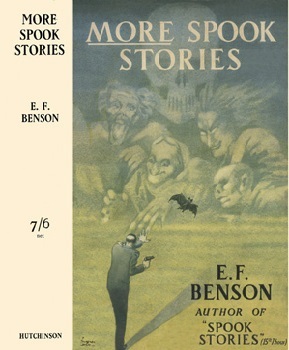 Now it’s worth remembering that E.F. Benson’s father was an Anglican clergyman and Archbishop of Canterbury and that one of his brothers was an Anglican priest who converted to Catholicism, became a Catholic priest and wrote religious texts, so I probably shouldn’t be surprised to see a theological argument in a story written by someone from such a background. However, as I’ve repeatedly said, I’m not religious, I dislike too much religion in my fiction and theological arguments literally make my eyes glaze over. And in this particular case, I had even less patience for theological arguments, because Alfred Wadham is about to be hanged for a crime he probably didn’t commit, so who cares whether a priest absolves him from his sins or not? Never mind that granting absolution for sins is part of Father Denys’ job.
Now it’s worth remembering that E.F. Benson’s father was an Anglican clergyman and Archbishop of Canterbury and that one of his brothers was an Anglican priest who converted to Catholicism, became a Catholic priest and wrote religious texts, so I probably shouldn’t be surprised to see a theological argument in a story written by someone from such a background. However, as I’ve repeatedly said, I’m not religious, I dislike too much religion in my fiction and theological arguments literally make my eyes glaze over. And in this particular case, I had even less patience for theological arguments, because Alfred Wadham is about to be hanged for a crime he probably didn’t commit, so who cares whether a priest absolves him from his sins or not? Never mind that granting absolution for sins is part of Father Denys’ job.
On the night before the execution of Wadham, an former acquaintance named Horace Kennion visits Father Denys. Father Denys wants nothing to do with Kennion, because Kennion is a wicked man – more wicked than usual, because Father Denys reminds us that all humans are wicked and that “the life of us all is a tissue of misdeeds”. Father Denys’ hands must be very beautiful indeed for the narrator to willingly hang out with such a killjoy.
However, Kennion is very insistent to speak to Father Denys, because he needs to make a confession right now and his usual priest is not available. So Father Denys reluctantly hears his confession. Surprise: Kennion is the one who killed Gerald Selfe over a quarrel about a game of cards (though there was no mention of cards or a card table in the earlier description of the crime scene). After stabbing Selfe, Kennion went up to Wadham’s room (Selfe had rung for Wadham earlier, but Wadham had already left, so Kennion knew the room would be empty) to wash off the blood – that’s how the blood stains came to be found in Wadham’s room.
Father Denys of course immediately entreats Kennion to go to the police and confess, so Wadham can be saved. However, Kennion has no intention of going to the police. And when Father Denys threatens that he will call the police, Kennion just grins and points out that he can’t, because his faith forbids it. And besides, who would believe a priest who violated to sacrament of confession?
Father Denys now demands why Kennion felt the need to confess his sins at all and why to him specifically. Once again Kennion grins and tells Father Denys that he was very hurt when Father Denys broke off all contact with Kennion. And so he decided to get revenge by putting Father Denys in a terrible situation where there are no good choices. “I daresay I’ve got Sadie tastes, too, and they are being wonderfully indulged,” Kennion says.
Now the vibes that I get from this exchange is that Father Denys and Kennion were lovers and that there may well have been some kink involved. But then Father Denys broke off the relationship and Kennion wants revenge. It’s also notable that Kennion calls Father Denys by his first name, something which was extremely uncommon among upper class British men in the early twentieth century. Even Kennion’s disdain for the doomed Alfred Wadham and his claim that Wadham has it coming for his other crimes – “Blackmail is a disgusting offence” – fits in with this, because gay men were often the target of blackmailers, back when gay relationships were still illegal. In fact, I wonder whether Kennion and his victim Gerald Selfe did not have a relationship, too. After all, it is explicitly stated that Kennion went up to Selfe’s room.

These are not actually the characters from this story, but E.F. Benson (on the right) and his brothers Arthur Christopher Benson (on the left, wrote the lyrics to “Land of Hope and Glory”) and Robert Hugh Benson (the priest).
I have to admit that though he is a murderer (double murderer to be exact) and generally horrible person, Horace Kennion is the most interesting character in this story. The narrator is a cypher, the victim Gerald Selfe is merely a prop required to get the story going and Alfred Wadham is more moral dilemma than character. As for Father Denys, he is an insufferably sanctimonious prick.
Case in point: Father Denys spends a few paragraphs detailing the terrible torment and suffering he experiences – a suffering that is not even “a needful and salutary experience to burn his sins away”, but empty torment. Meanwhile, the actual victim here is not the moping priest with a crisis of conscience, but Alfred Wadham who is about to be executed for a crime he did not commit.
Though at least Father Denys does take some action rather than just sit around feeling sorry for himself. First, he goes to see the Cardinal, who basically tells him that he cannot violate the seal of confession. Then he goes to see the Home Secretary and tells him that Wadham is innocent, because the real murderer just confessed to him.
The Home Secretary is sympathetic, but tells Father Denys that he cannot pardon Wadham without more evidence. He also tells Father Denys to put the fear of God into the real murder to get him to confess and also gives the priest his phone number, just in case.
However, Father Denys doesn’t need the phone number, because instead of putting the heat on Kennion, he goes straight to the prison, tells Wadham that he believes in his innocence and finally grants him absolution for all his other sins. Then we learn that Wadham went without flinching to his death. There is also a brief one sentence description of the trapdoor opening and the rope jumping and creaking. But otherwise, the hanging that Hugh Rankin drew so evocatively happens mostly off page.
This is rather disappointing, particularly compared to the visceral description of a hanging in Harold Markham’s story “In a Dead Man’s Shoes”, published a few months before in the April 1929 issue of Weird Tales. Of course, Markham was describing a public hanging in the eighteenth century rather than a prison hanging in the early twentieth century, but there are plenty of much more evocative descriptions of twentieth century prison hanging than the single sentence that Benson gives us.
But then, the story isn’t really about the hanging of Alfred Wadham at all, in spite of the title. It is about Father Denys and his moral dilemma. And now Father Denys finally comes to the point of his tale, namely why séances are bad and do not convey messages from the dead, but from some “evil and awful power impersonating them”.
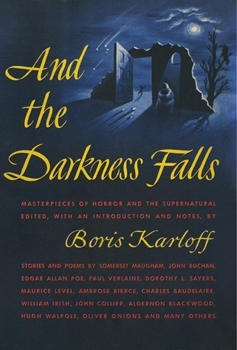 After the execution, Father Denys goes home and Benson gives us more description of the weather than of the actual execution. However, mostly we get yet more musings from Father Denys. Even though he has just watched a man been hanged for a crime he did not commit, Father Denys feels serene and peaceful. After all, in Father Denys’ view, it doesn’t much matter that Alfred Wadham was hanged. After all, he had all his sins forgiven and still has his immortal soul and getting hanged for a crime he didn’t commit is just like martyrdom.
After the execution, Father Denys goes home and Benson gives us more description of the weather than of the actual execution. However, mostly we get yet more musings from Father Denys. Even though he has just watched a man been hanged for a crime he did not commit, Father Denys feels serene and peaceful. After all, in Father Denys’ view, it doesn’t much matter that Alfred Wadham was hanged. After all, he had all his sins forgiven and still has his immortal soul and getting hanged for a crime he didn’t commit is just like martyrdom.
Meanwhile, Father Denys makes it clear that the most important thing to him is that he kept his precious vow and did not commit the worst crime a Catholic priest can commit. This was the moment where I went from, “What sanctimonious bore” to “What a fucking arsehole – I hope something awful happens to him.” Thankfully, something does.
Once he gets home, Father Denys lies down for a nap – after all, he has been up all night. He has a bad dream of Wadham screaming at him and begging him to save him. He wakes up to the sound of someone calling his name in Wadham’s voice. Yes, apparently Wadham has returned to haunt Father Denys and highly deserved it is, too. Honestly, Wadham, haunt the shit out of that jerk of a priest.
Father Denys now keeps hearing Wadham calling his name, he feels Wadham’s presence. he sees him on the street and once sees Wadham’s body swinging in the wind outside his window, which is the scene Hugh Rankin’s interior actually illustrates.
The haunting of Father Denys – which would be a much better title for this story, come to think of it – culminates when he sees Wadham – with the noose round his neck, face purple and eyes protruding – sitting in a pew at the front of the church, while Father Denys is preaching. However, Father Denys is still convinced that he made the right choice and concludes that the one sending the apparitions is the devil rather than one very pissed off ghost.
The story ends with the ghost of Alfred Wadham – or the devil pretending to be the ghost of Alfred Wadham – reappearing in front of the narrator’s and Father Denys’ eyes. We get some nice, if conventional description of a ghostly apparition such as the room growing chill and the lights turning dim and then we get a manifestation of Alfred Wadham’s hanged body, complete with swollen and purple face and lolling tongue. Alas, Father Denys wards off the evil spirit with his crucifix and appears radiant as he has never seen another human being before to the smitten narrator.
Finally, almost as an afterthought, almost as if Benson had forgotten that Father Denys couldn’t possibly tell this whole story to the narrator without breaking his vow, Father Denys reveals that Horace Kennion committed suicide that morning and that he left a full confession behind, which is why Father Denys is no longer bound by the seal of confession and can share his story with the narrator.
 I have read a lot of stories from Weird Tales over the years, both for the Retro Reviews project or in general. But “The Hanging of Alfred Wadham” is definitely the worst Weird Tales story I have read to date.
I have read a lot of stories from Weird Tales over the years, both for the Retro Reviews project or in general. But “The Hanging of Alfred Wadham” is definitely the worst Weird Tales story I have read to date.
This is a pity, because the seeds for a good story are all here. The scenario of a priest who hears about a crime during confession and struggles to find a way to expose the criminal or prevent the crime without violating the seal of confession is a well-worn one, but it can work, when done correctly. The fact that Alfred Wadham will be executed, if Father Denys can’t find a way to bring Kennion to justice adds a ticking clock to the proceedings. This scenario might have made for a neat thriller – and indeed there have been many thrillers with this exact premise. Alfred Hitchcock’s 1953 movie I Confess, which in turn is based on a French play from 1902, is probably the most famous example, but there are several others.
However, this isn’t the story that Benson told. Of course, the story of a priest haunted by the ghost of an executed man he could have saved by breaking the seal of confession, but didn’t, might have made for a compelling ghost story as well, but that’s not really the story Benson tells either. Or at least, he doesn’t tell it very well.
Instead, we get what appears to be a theological argument in the form of a short story. Which is probably my least favourite type of fiction, because as I said above, I’m not religious and theological debates make my eyes glaze over. Plus, I come from a majority Lutheran-Protestant area. And Lutherans, at least in Germany, have massive issues with the Catholic sacrament of confession, which they view as hypocrisy, because you can literally commit a murder and then be forgiven your sins, just because you confessed and said a few prayers. It all goes back to the sales of indulgences, which were one of the issues that caused Martin Luther to nail the ninety-five theses to the door of the Wittenberg castle church.
Of course, it’s quite possible that Benson intended “The Hanging of Alfred Wadham” as a critique of the Catholic sacrament of confession and its inherent issues. After all, Benson’s father was Archbishop of Canterbury and therefore Anglican, even though one brother converted to Catholicism. And Father Denys is not a likeable character. However, if criticising the issues inherent in the sacrament of confession was Benson’s intention, he doesn’t do it very well either.
Because “The Hanging of Alfred Wadham” also has massive craft issues. The framing device and the unnamed narrator are completely unnecessary – just let Father Denys narrate the story and maybe end with him seeing Alfred Wadham’s executed corpse in the church pew. It would certainly have made for a stronger story.
The murder mystery is also sloppily executed (pun fully intended), because it seems the police ignored crucial clues such as the fact that Selfe and Kennion had played cards and that there was a card table set up, which would suggest that Selfe had a visitor on the night he was killed. The blood stains found in Wadham’s room also don’t add up. For starters, they’re explicitly described as human blood stains, though I have no idea if 1920s forensic science could tell the difference between human and animal blood from a few traces. Also, there are any number of ways the blood could have gotten into Wadham’s room such as Wadham accidentally cutting himself while shaving. This may sound nitpicky, but by 1928/29, the so-called Golden Age of Mystery was in full swing, most mysteries were so-called fair play mysteries and plenty of predominantly British authors knew how to plant clues and red herrings. So there is really no excuse for Benson’s sloppiness. Read some Agatha Christie or Dorothy Sayers, will you.
The writing style is also stilted, ponderous and dull throughout. “The Hanging of Alfred Wadham” is short, only nine pages, but it feels much longer. Benson also has the tendency to overfocus on Father Denys’ internal conflict and underdescribe the murder, the execution and the supernatural events, i.e. the sort of thing Weird Tales readers were probably far more interested in than in a theological argument and a priest’s mental torment.
Furthermore, the story also feels very old-fashioned, more like something that might have appeared in the nineteenth century alongside a Sherlock Holmes or Edgar Allan Poe story than something that appeared alongside Robert E. Howard’s “The Shadow Kingdom”. Of course, Benson was not a young man, but already 61 when this story was published and so his style and sensibilities likely were more Victorian.
The one thing about this story that is interesting is the glimpse into closeted gay life in the early twentieth century. Because make no mistake, this is a very gay story. Father Denys, the narrator, murderer Horace Kennion and his victim Gerald Selfe are implied to be closeted gay man, while wrongful execution victim turned vengeful ghost Alfred Wadham was a blackmailer who blackmailed men about their indiscretions. And yes, Gerald Selfe’s sexual indiscretions are said to have been with a married woman, but I suspect Benson just added that tidbit to make the story more palatable in a world, where LGBTQ themes could only be hinted at.
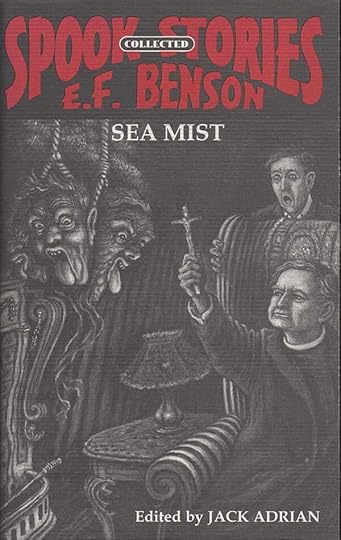
The cover of this fairly recent edition of E.F. Benson’s collected ghost stories actually illustrates “The Hanging of Alfed Wadham”
Another thing that’s notable is that this is a fairly rare example of a pulp story that’s explicitly religious. Because contrary to what certain folks say, religion in general and Christianity in particular do not play a big role in pulp SFF and pulp fiction in general. Especially in pulp SFF, religion is either a scam or for aliens or it involves sacrificing nubile virgins to Cthulhu. Yes, there are exceptions such as Robert E. Howard’s Solomon Kane, but they are few and far between.
And come to think of it, Solomon Kane, Howard’s fanatical Puritan avenger and scourge of all that is evil, is a much more interesting and compelling portrait of an intensely religious person in moral distress, though in Kane’s case is moral dilemma is that he is a violent man who kills a lot of people, believing himself to be on a mission from God. Only that both Kane’s religious and moral dilemma and his adventures are a lot more exciting and better written than “The Hanging of Alfred Wadham”. This is particularly interesting since three Solomon Kane stories, “Red Shadows”, “Skulls in the Stars” and “Rattle of Bones” had already been published by the time this story was published. So Weird Tales had already published much variations on the theme of “An intensely religious person is confronted by the supernatural and has their faith tested”.
In fact, if you come across explicitly religious SFF from the 1930s and 1940s, it usually hails from Britain and was published outside the pulp magazine ecosystem. C.S. Lewis is probably the best known example, though E.F. Benson also fits the bill. Now I make no secret of the fact that I intensely dislike C.S. Lewis’ fiction, but much as Lewis’ religious blathering annoys me, there is no doubt that Lewis could write. E.F. Benson, at least based on this example, couldn’t.
“The Hanging of Alfred Wadham” was my first exposure to E.F. Benson’s work, but based on this story, I certainly won’t go seeking out more of his work. In fact, I am baffled that Benson is famous enough to have a Wikipedia entry, plenty of reprints of his work and film and TV adaptations. Maybe his satirical small town tales are better or maybe this story is just a dud. It definitely is proof that even Weird Tales did publish duds on occasion, though they are still a lot more consistent than other pulp magazines.
If you want a Weird Tales story featuring an execution, read the much superior “In a Dead Man’s Shoes” by Harold Markham. If you want a story about an intensely religious person having their faith and personal morality tested by encounters with the supernatural, read Robert E. Howard’s Solomon Kane stories. If you want religious blathering but well written, read C.S. Lewis. If you want to read a great story from the August 1929 issue of Weird Tales, read “The Shadow Kingdom” by Robert E. Howard.
But don’t bother with “The Hanging of Alfred Wadham”, unless you are a fan of E.F. Benson’s or really like religious blathering and theological arguments in your fiction or are doing a study of early LGBTQ speculative fiction.
Cora Buhlert's Blog
- Cora Buhlert's profile
- 14 followers





